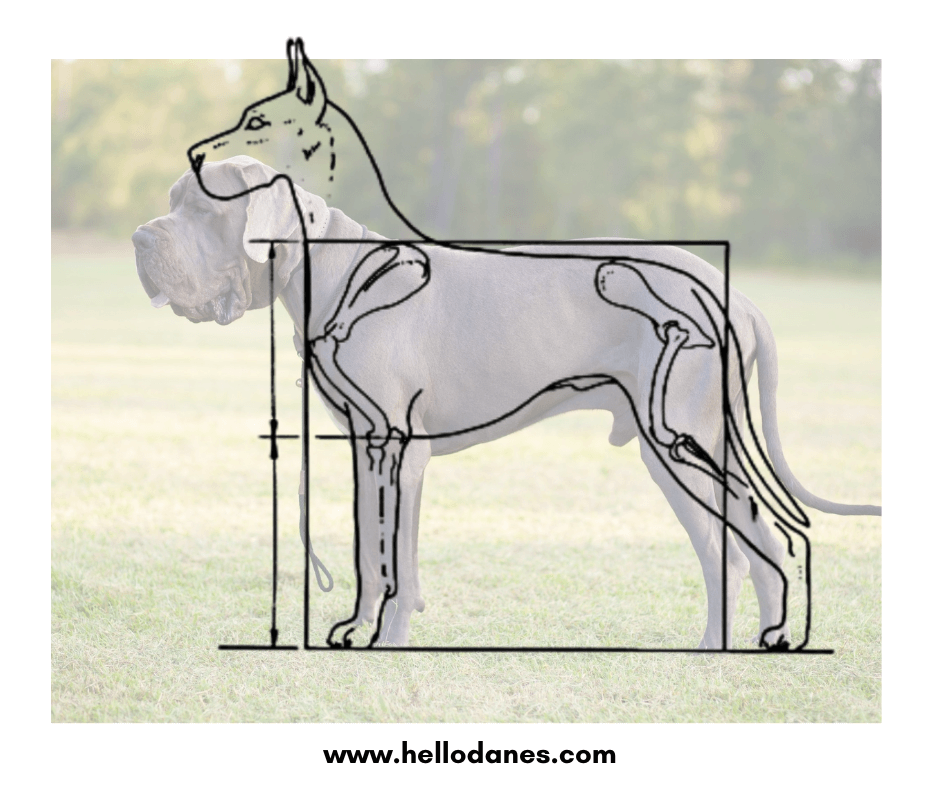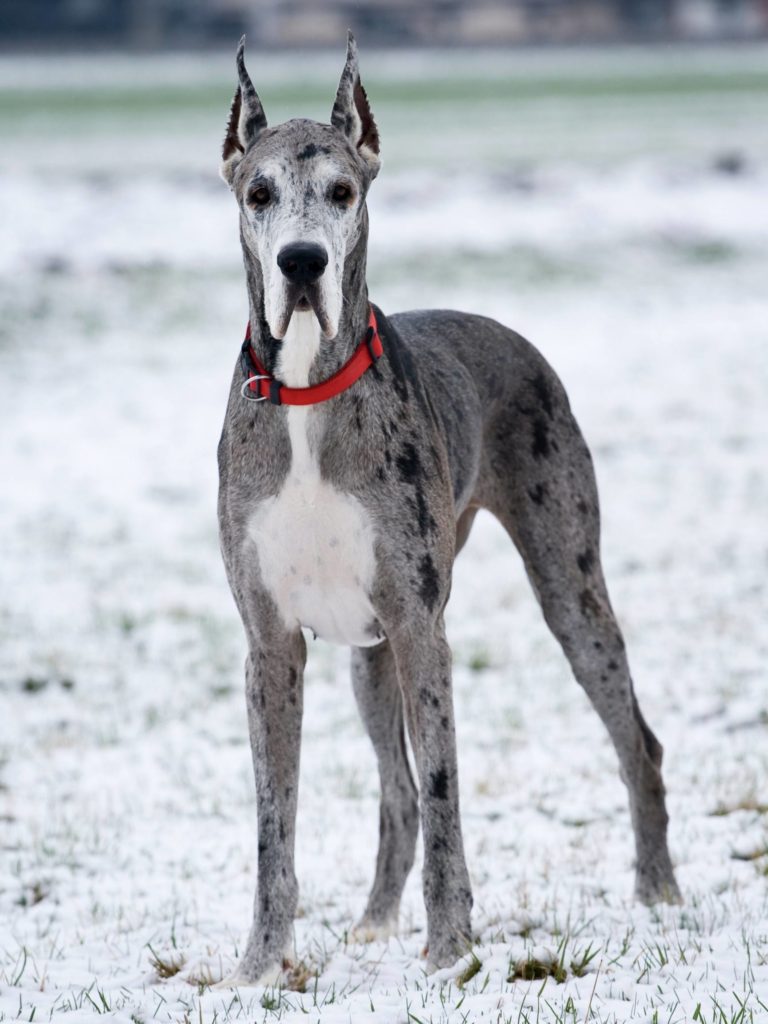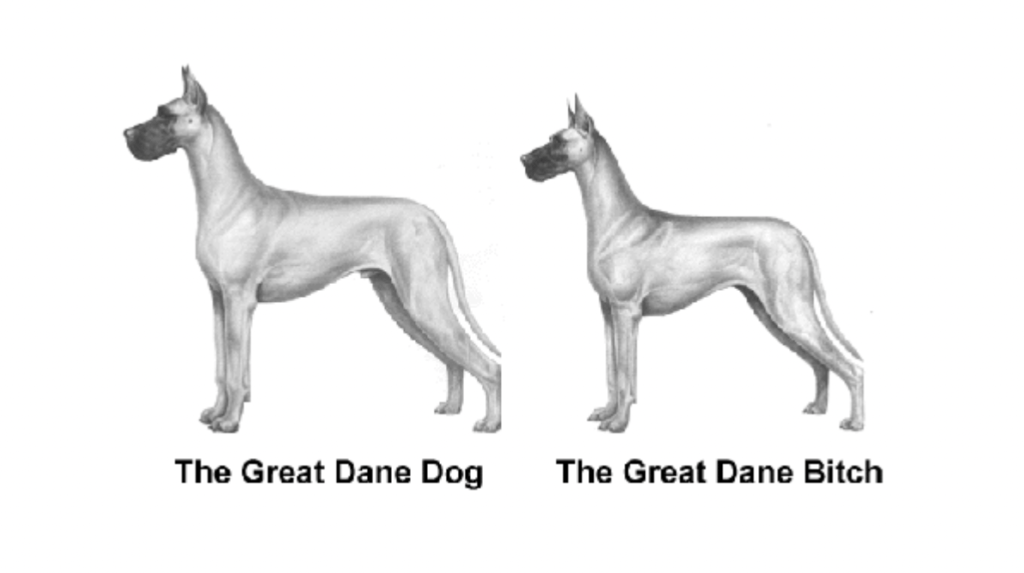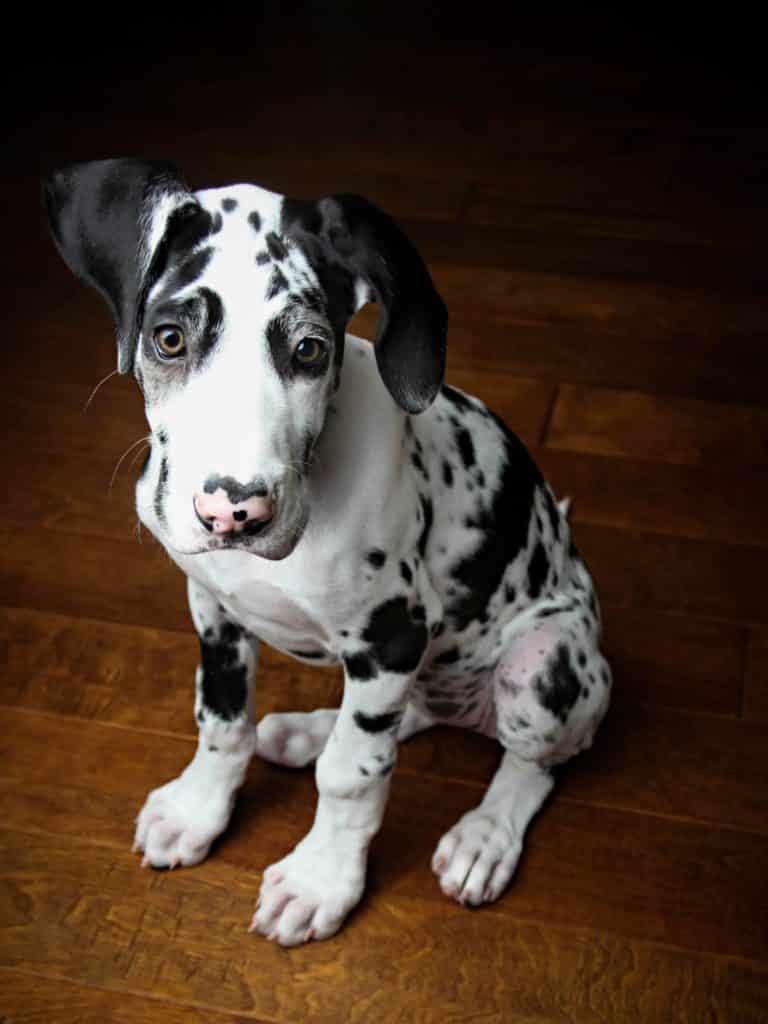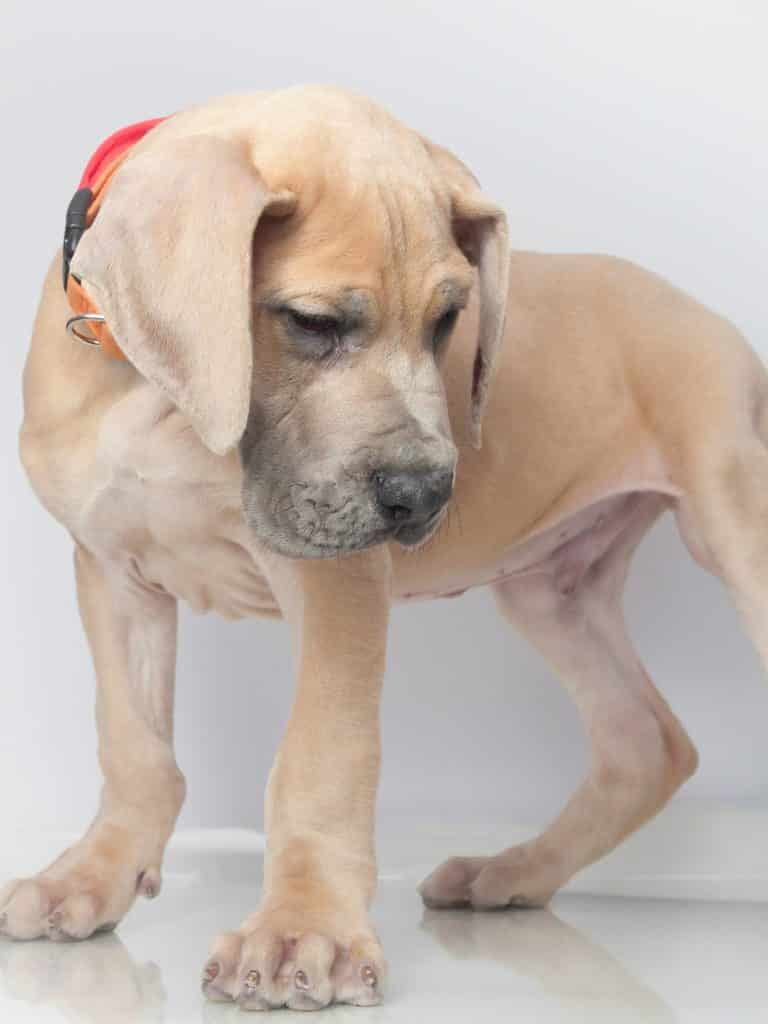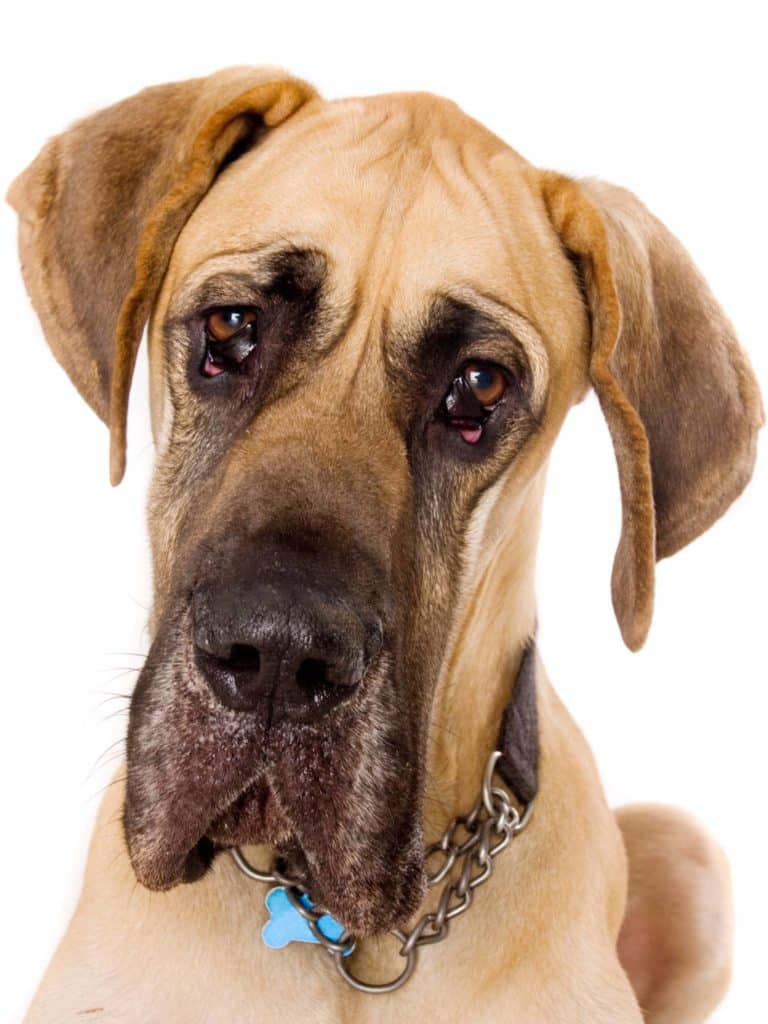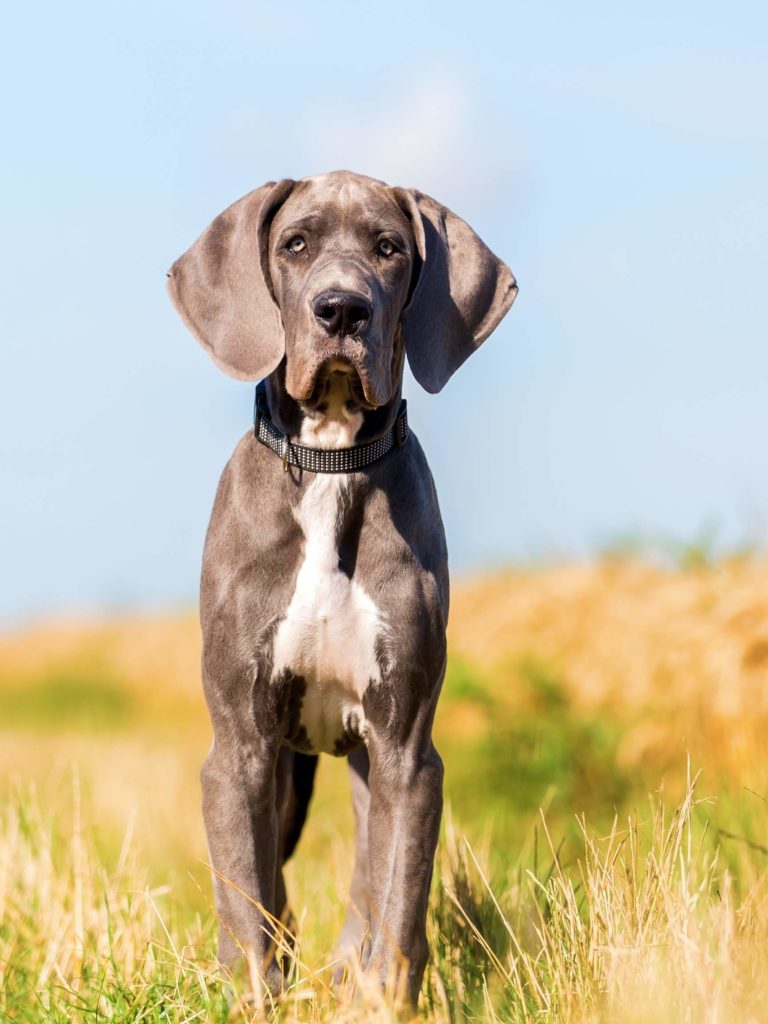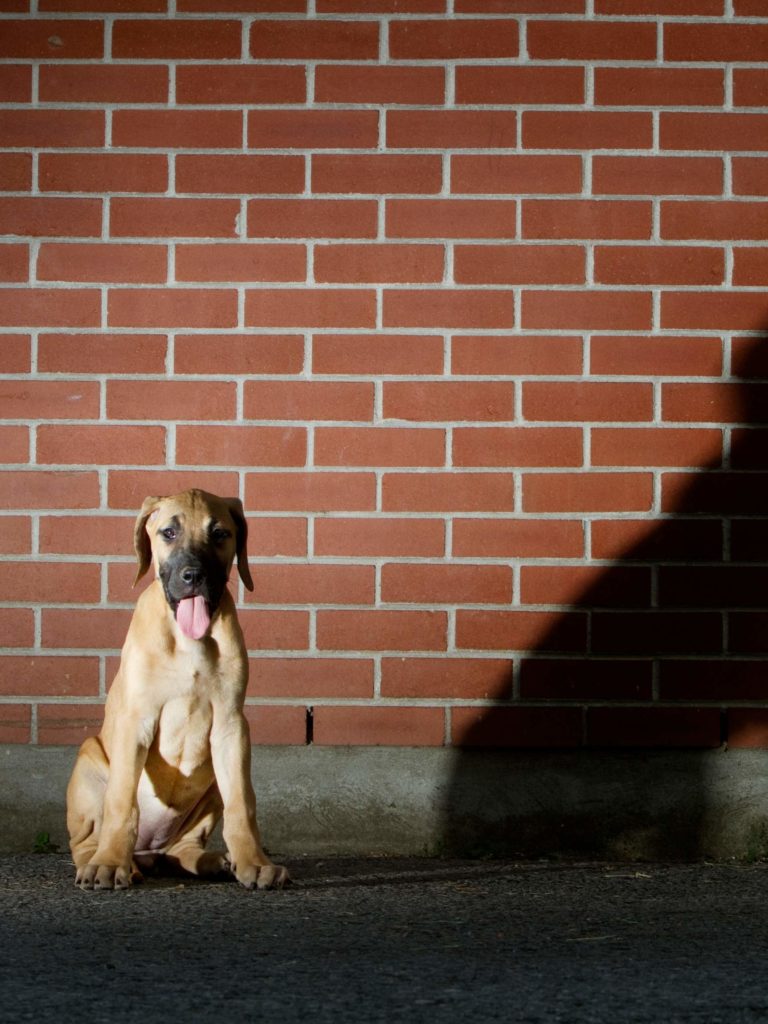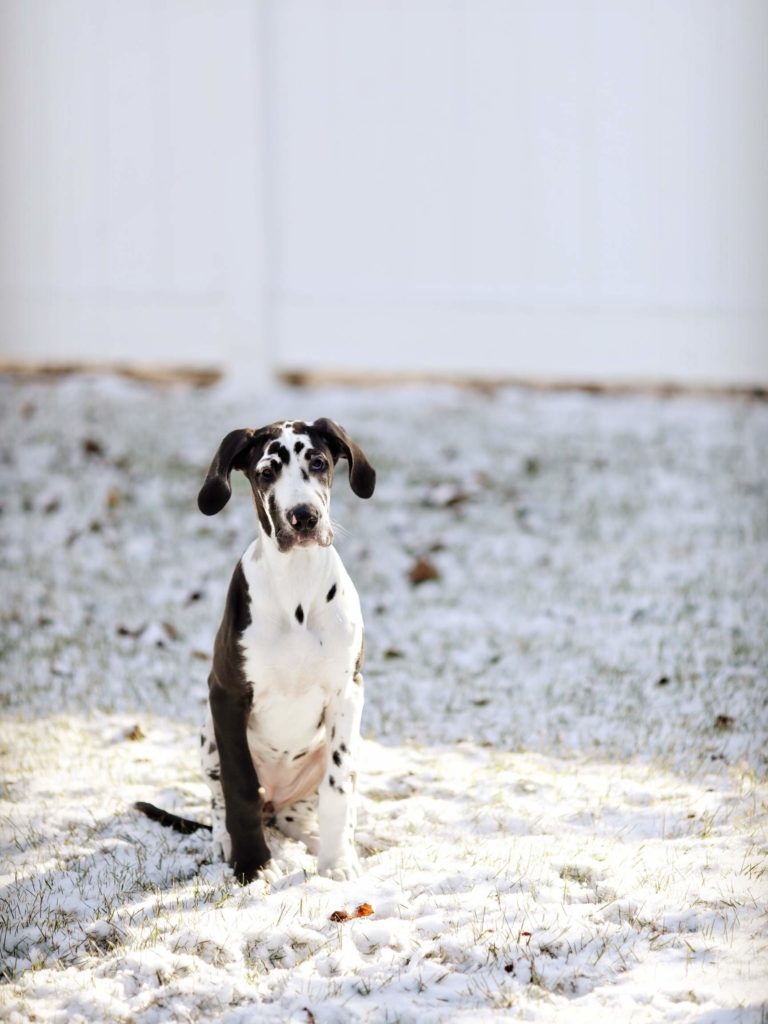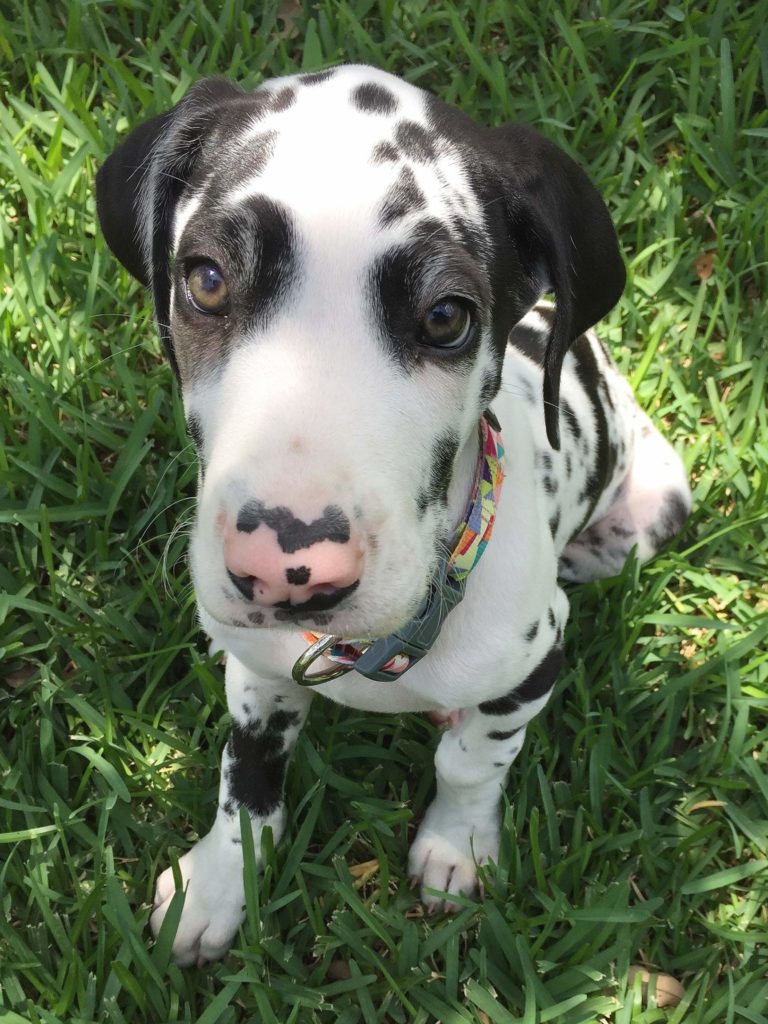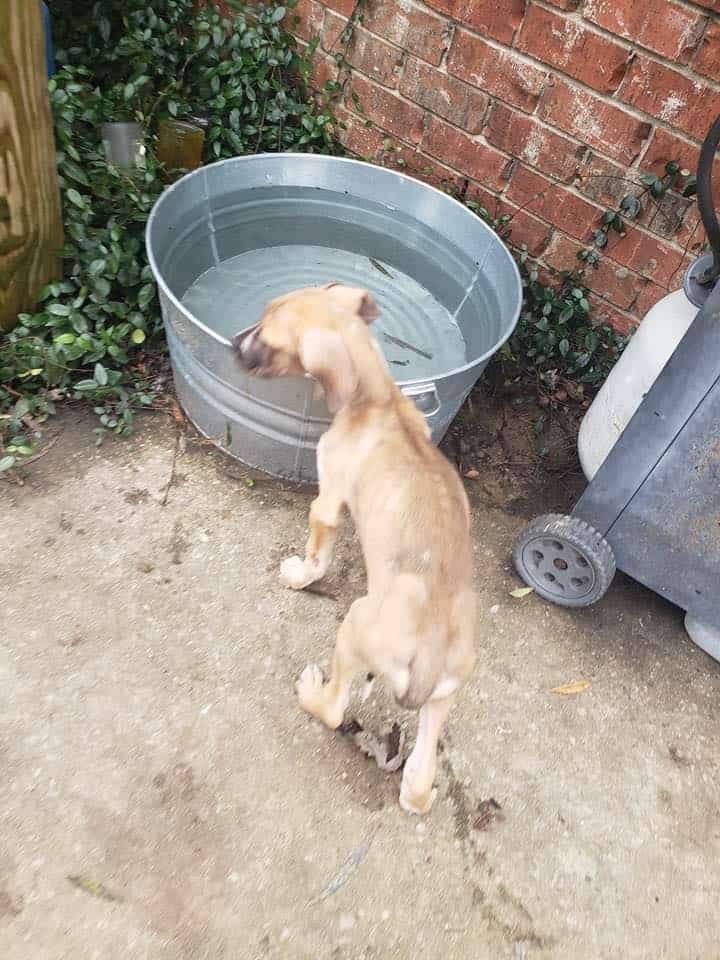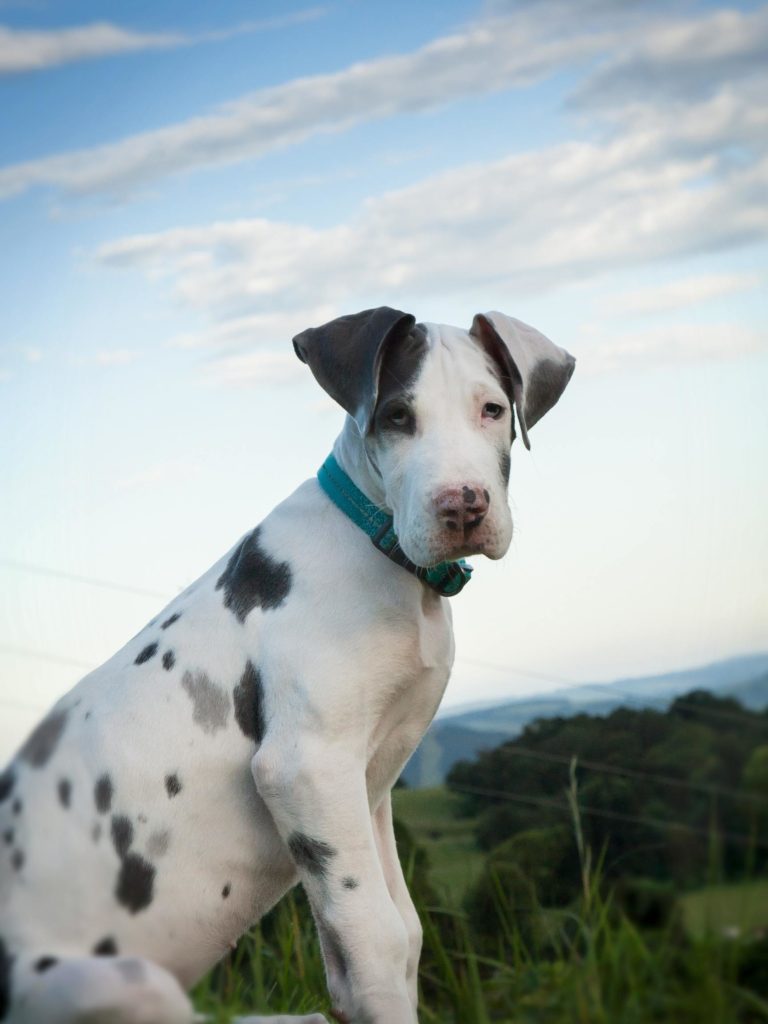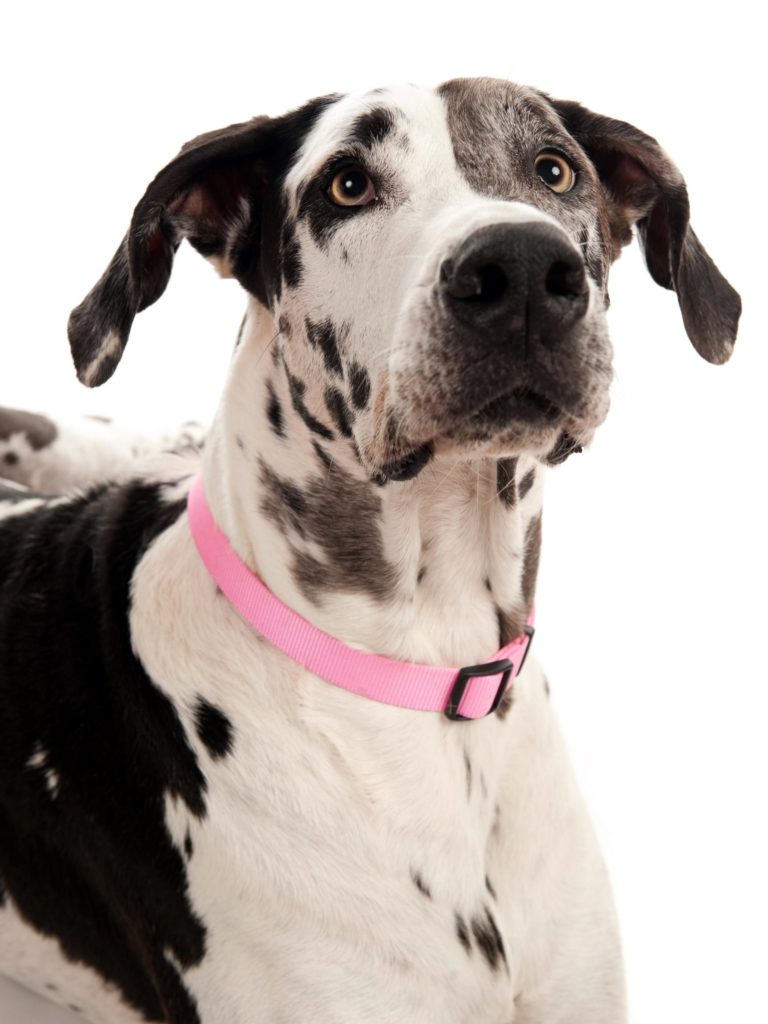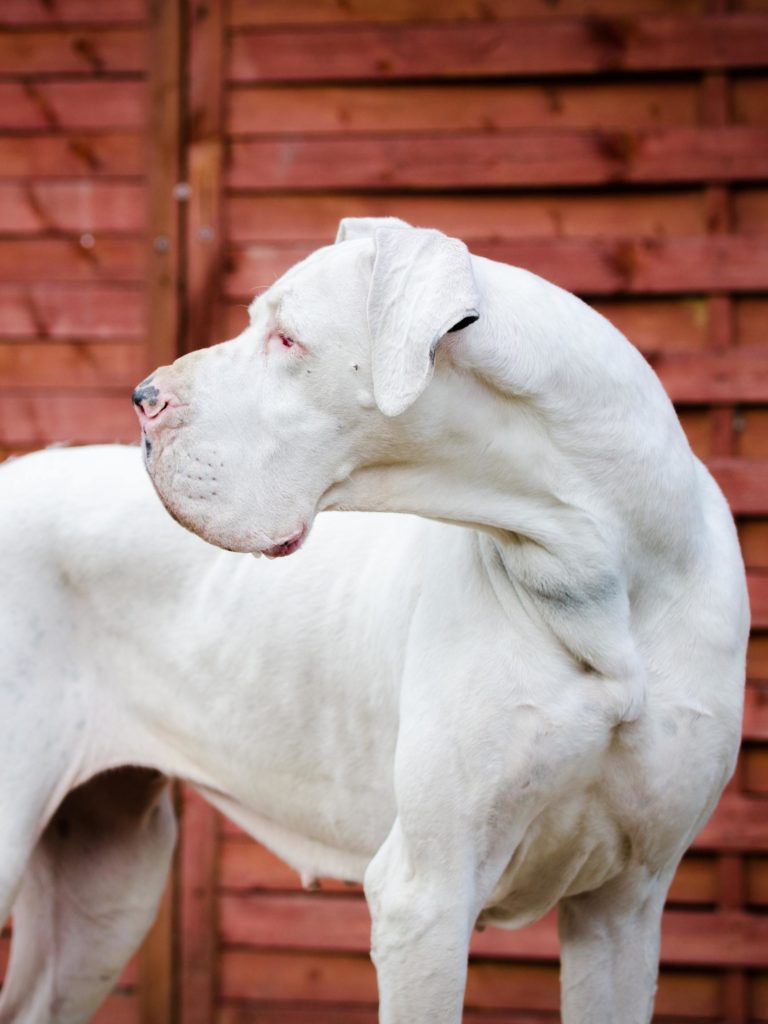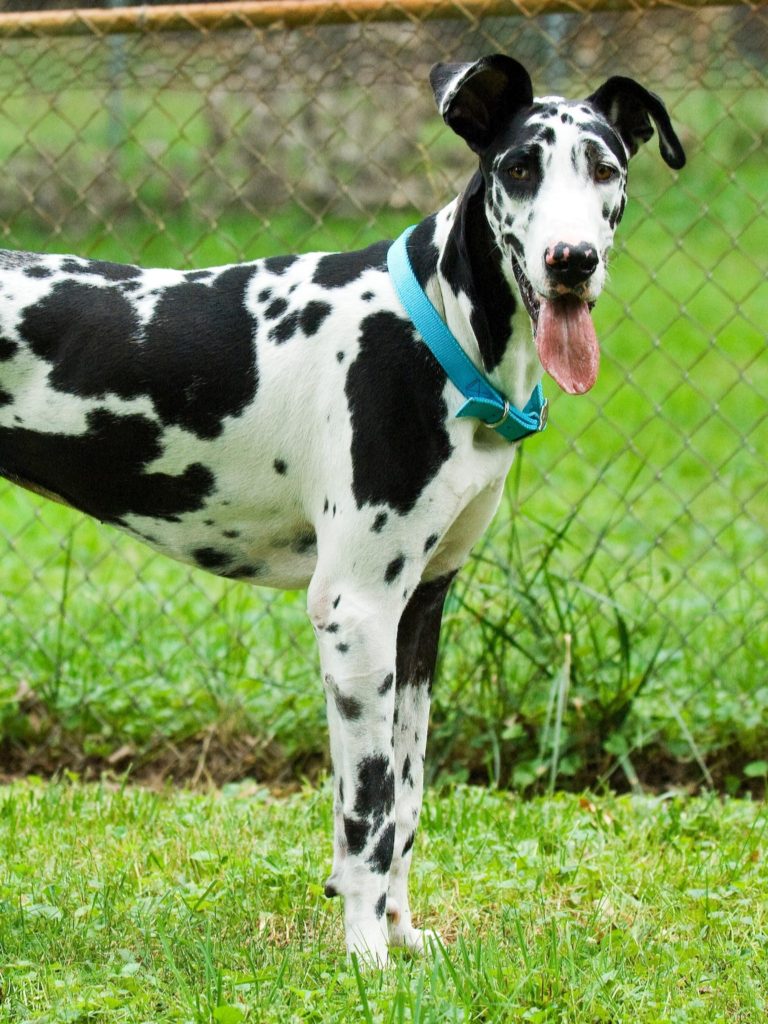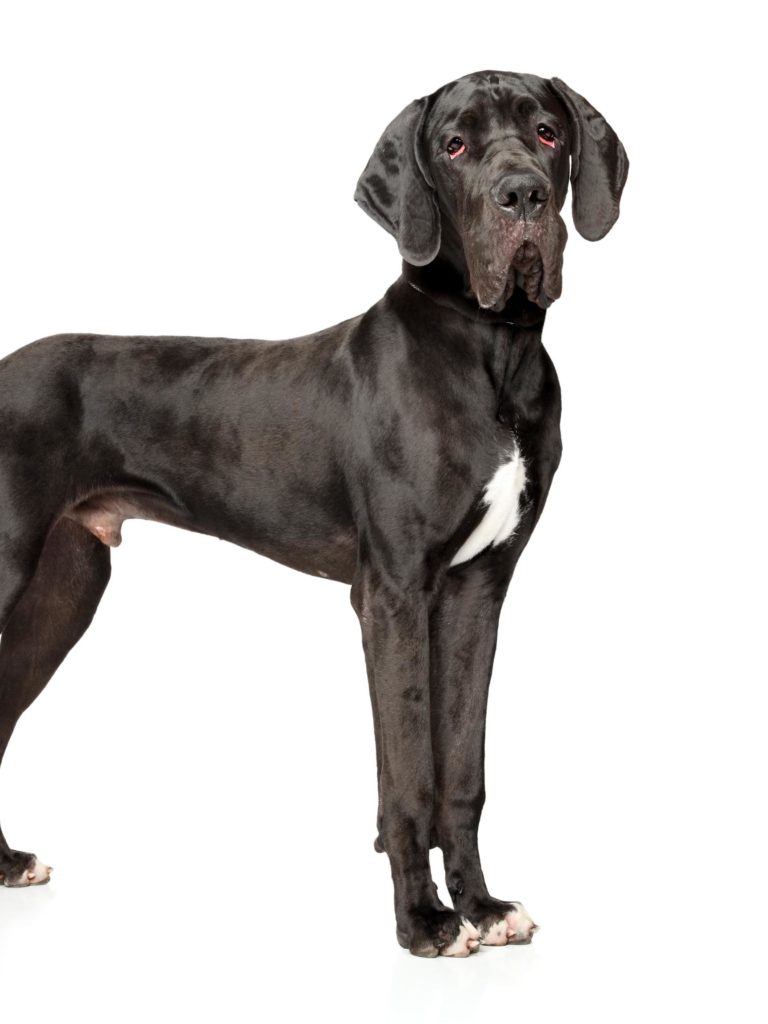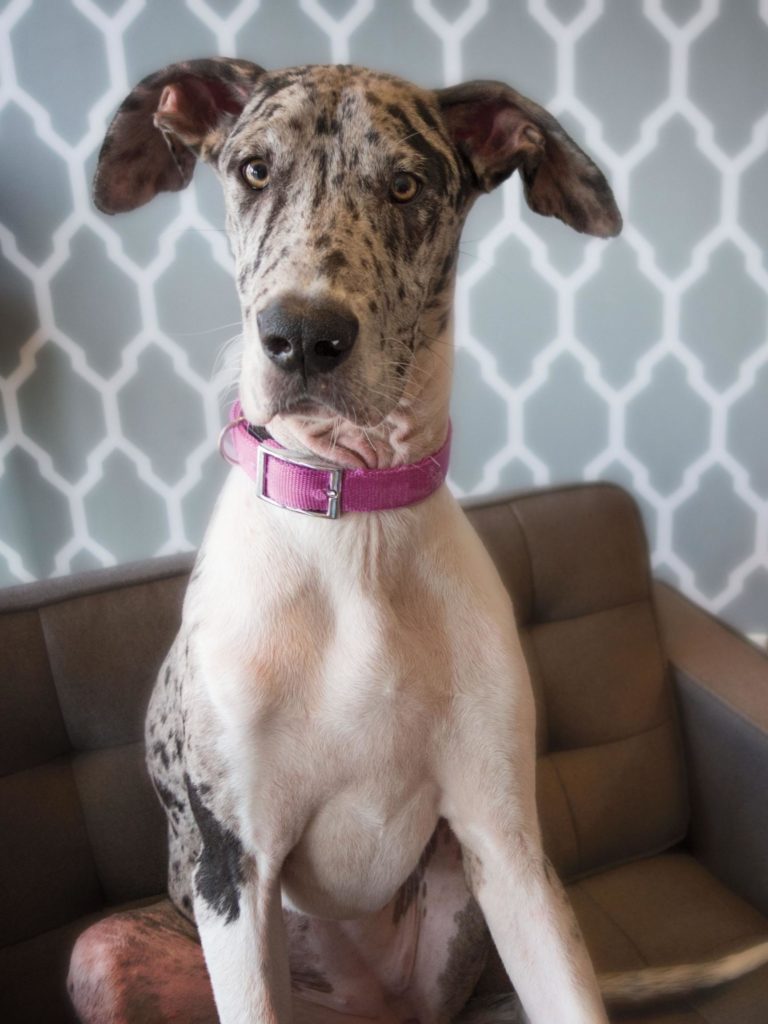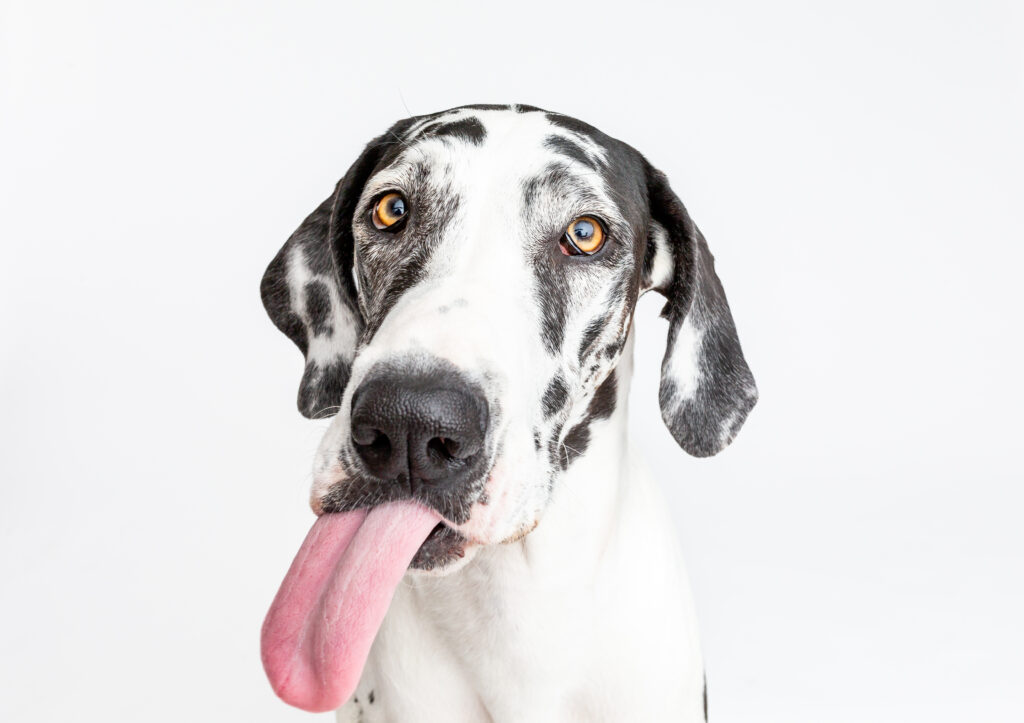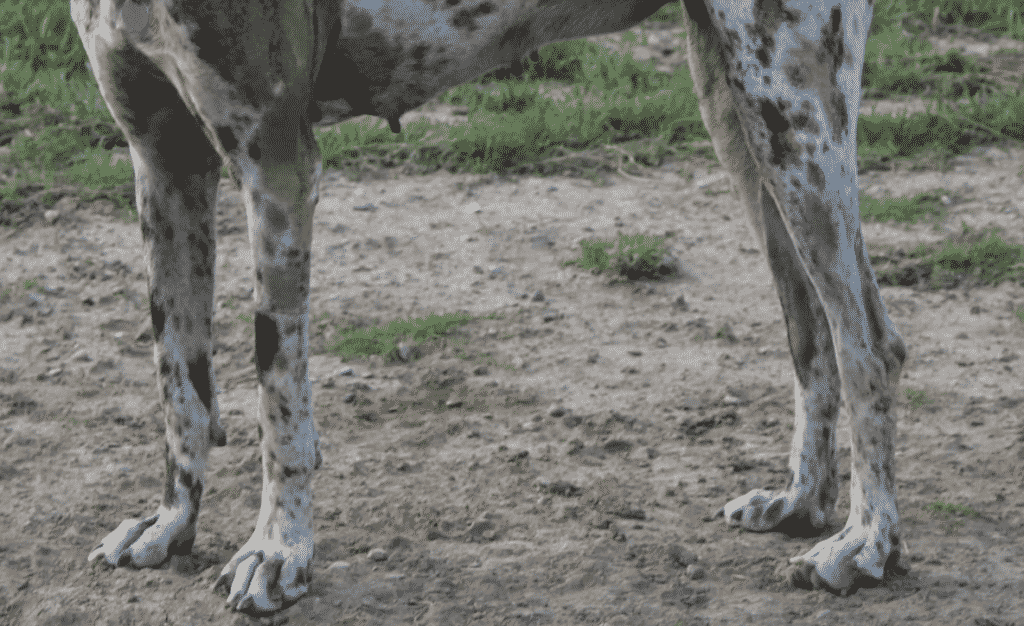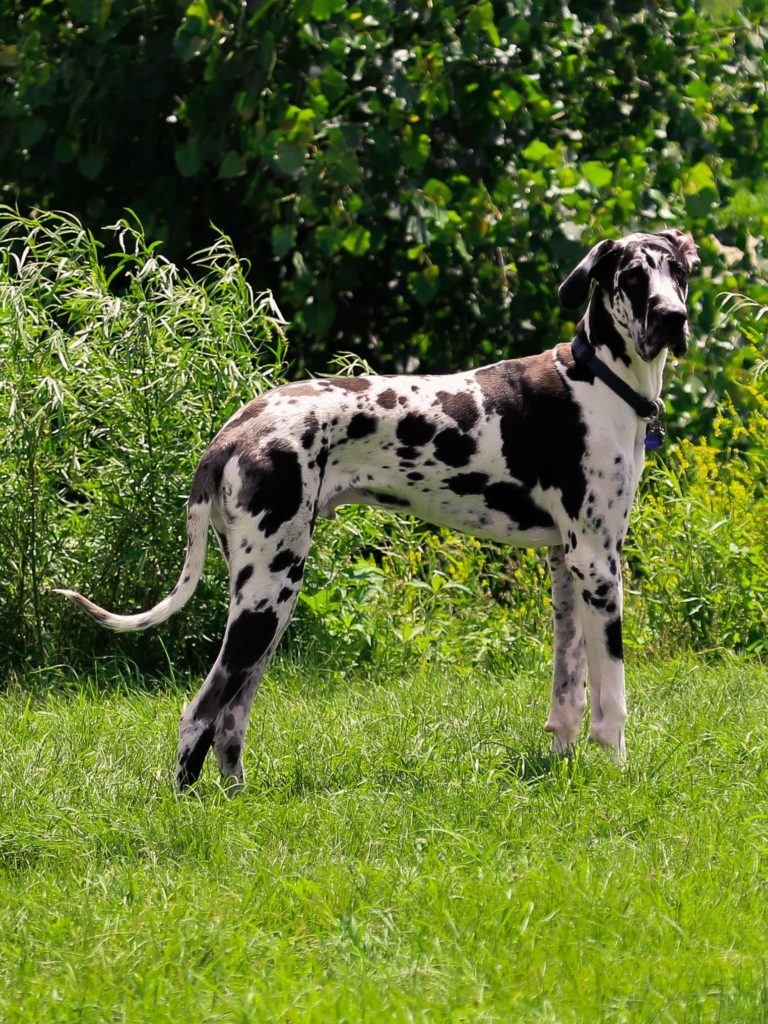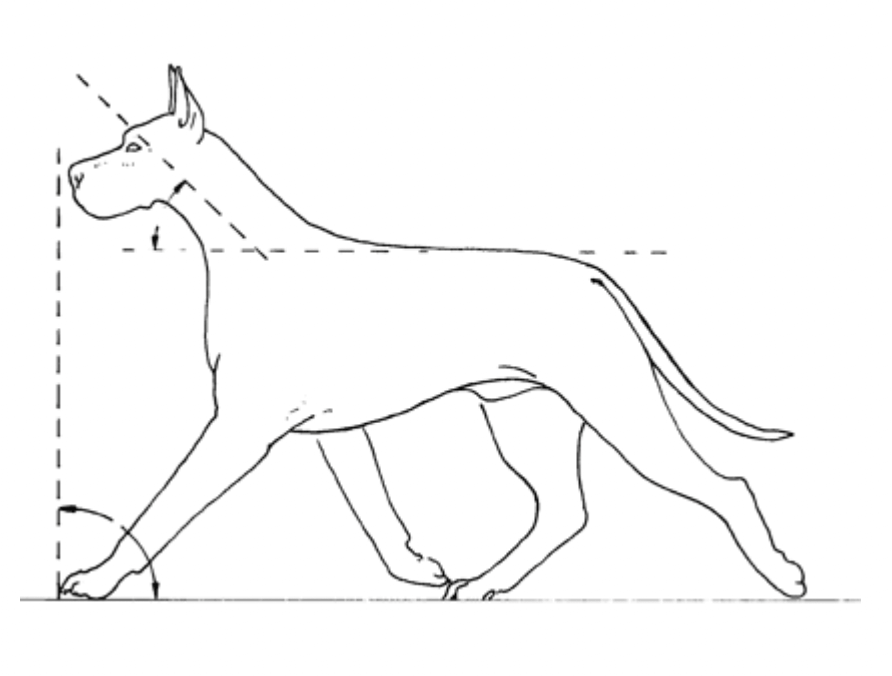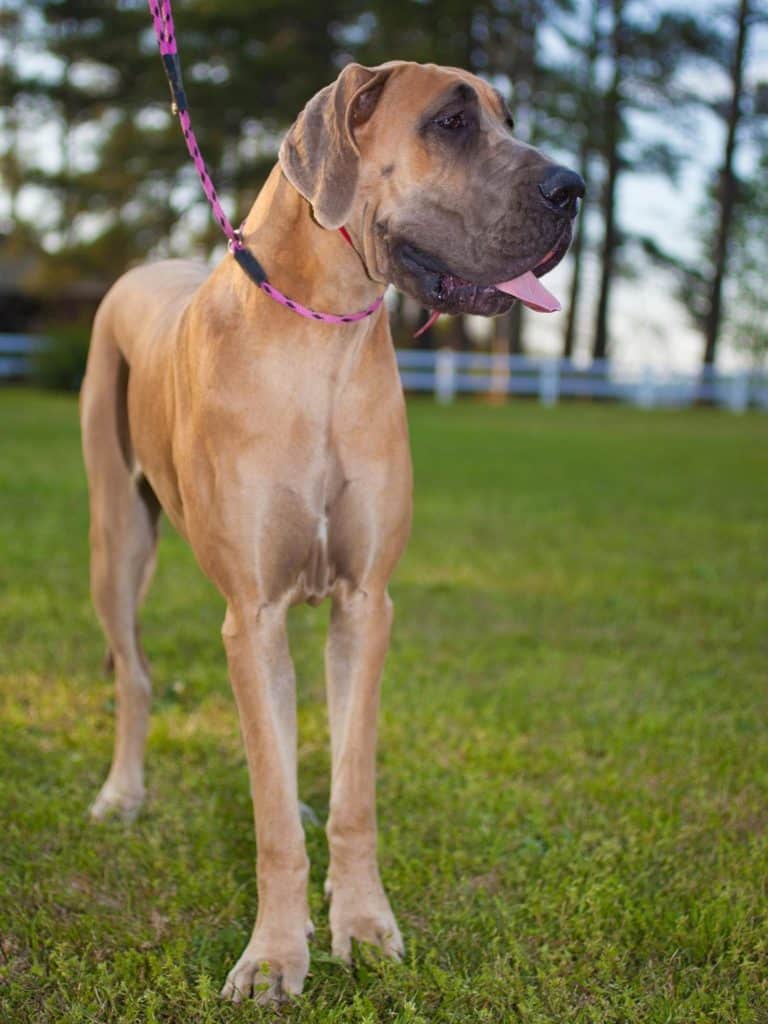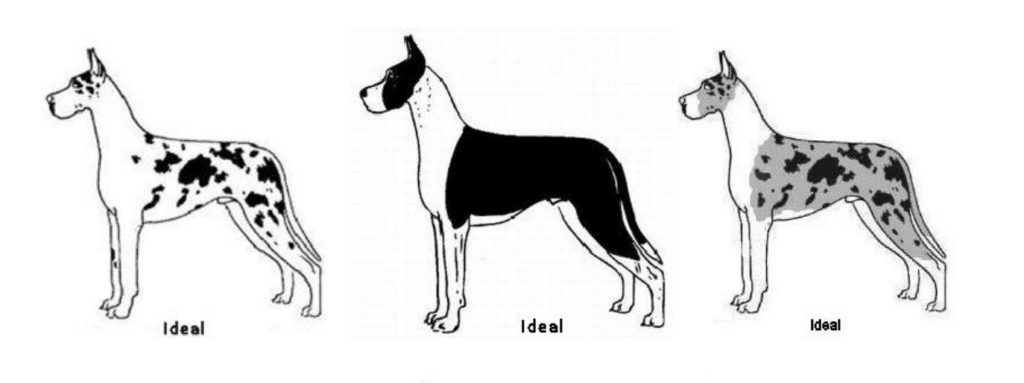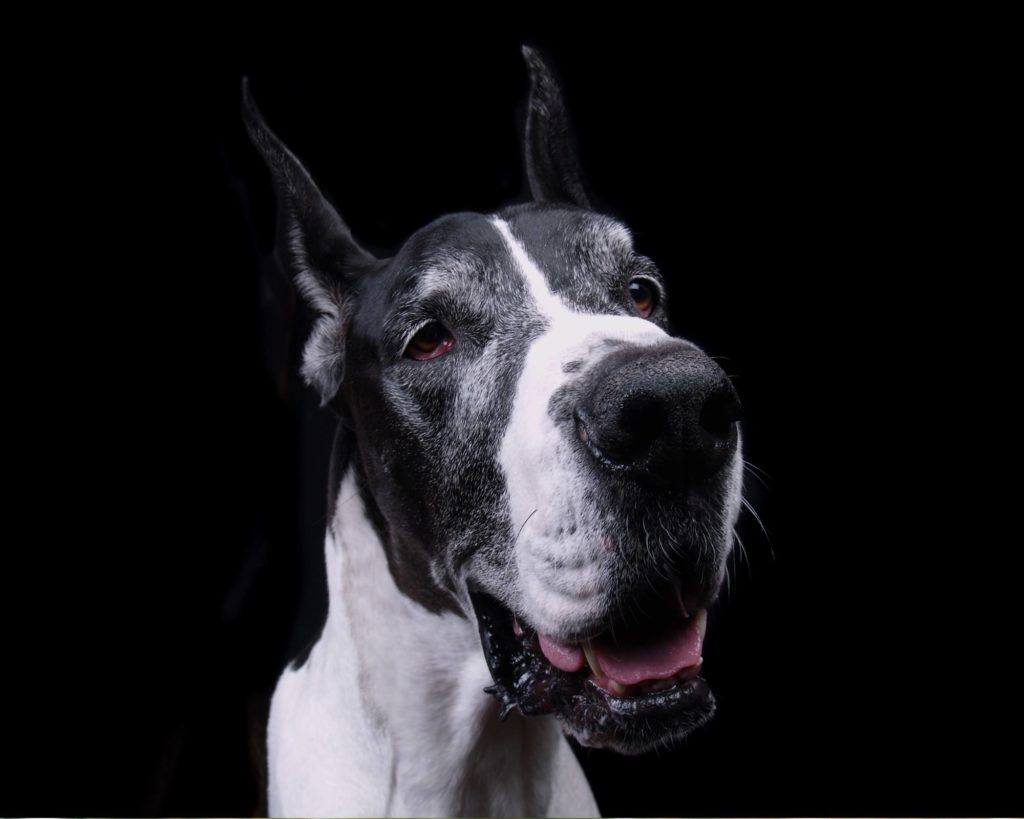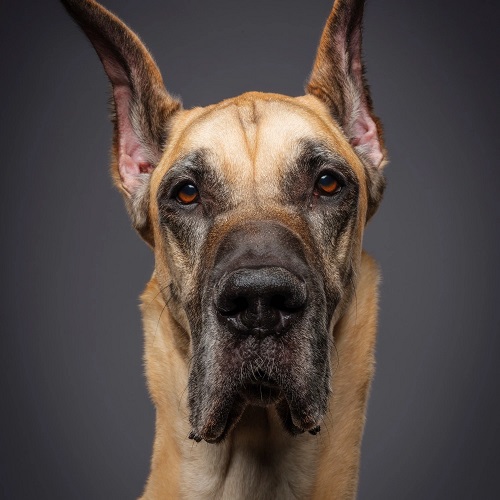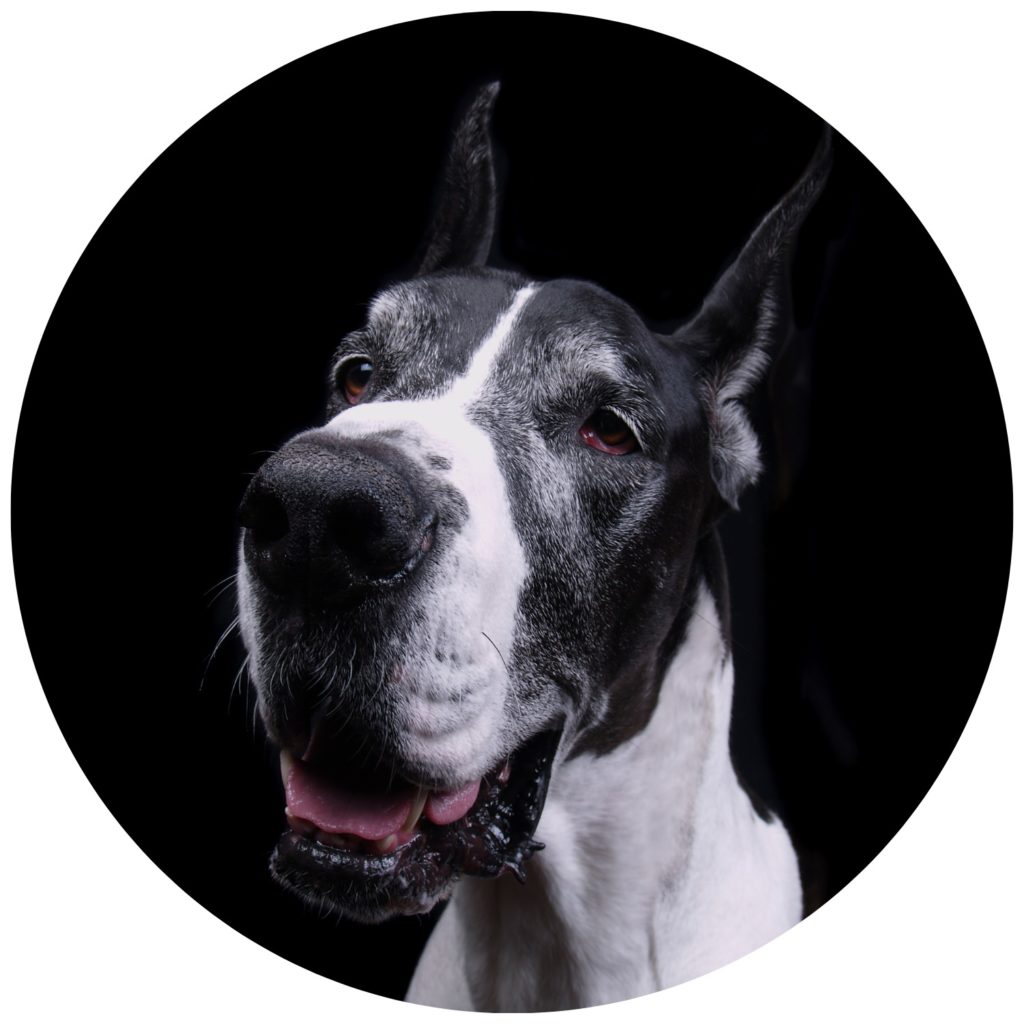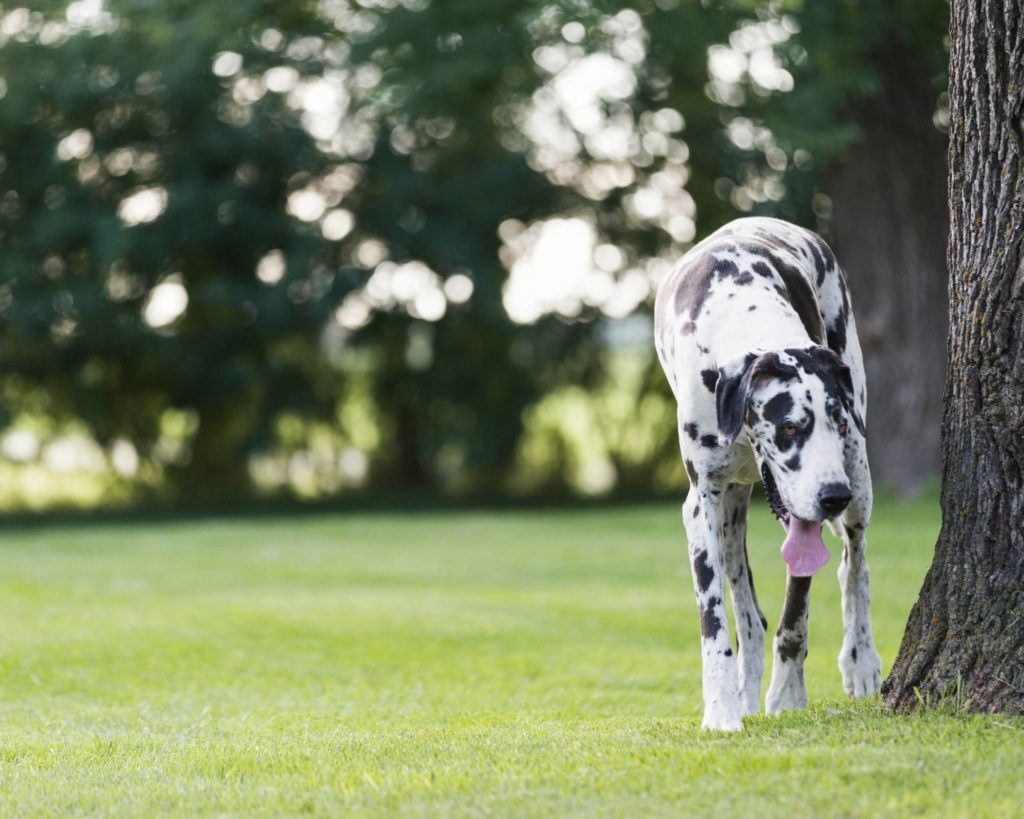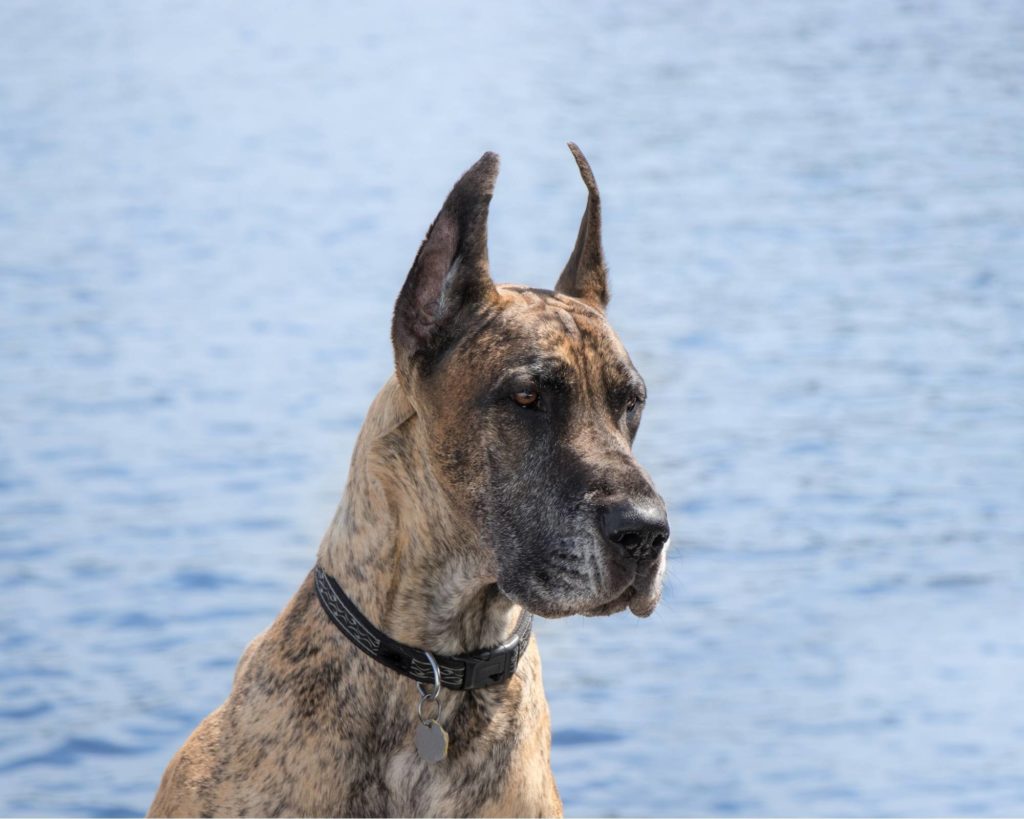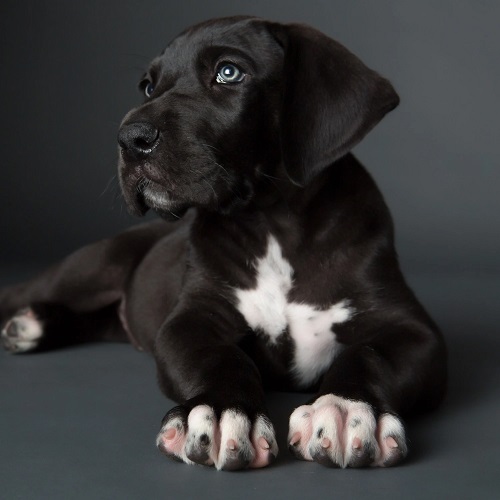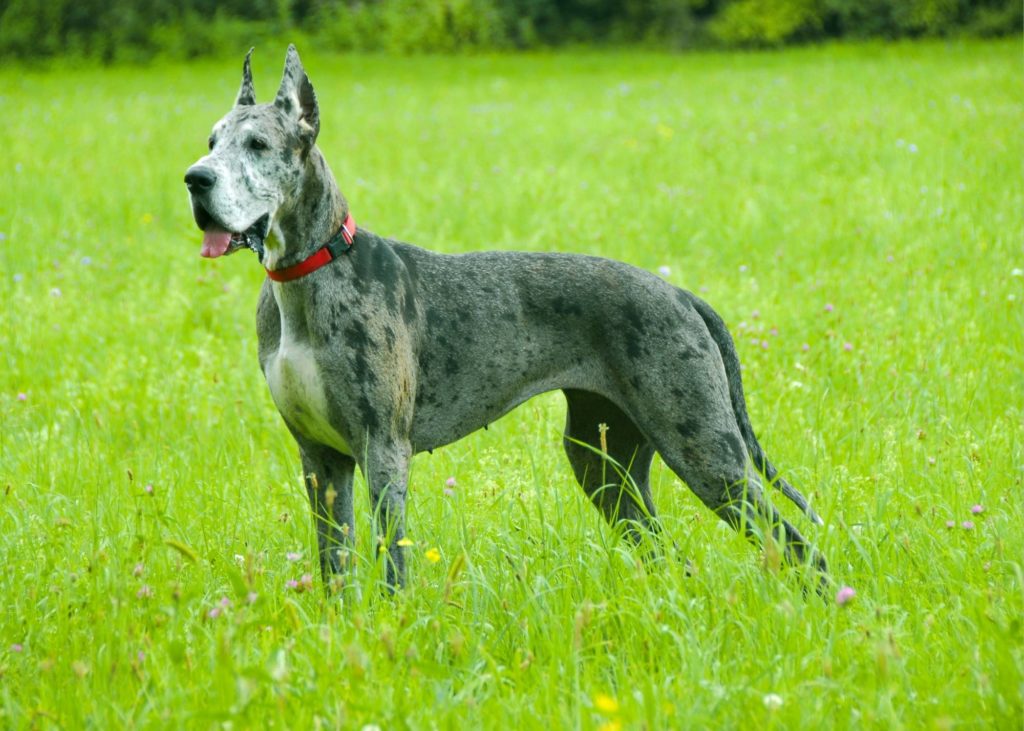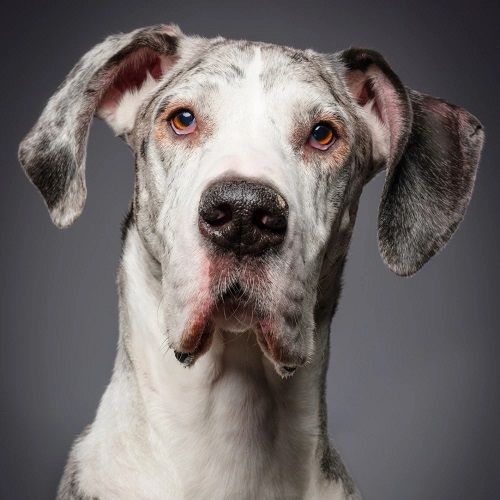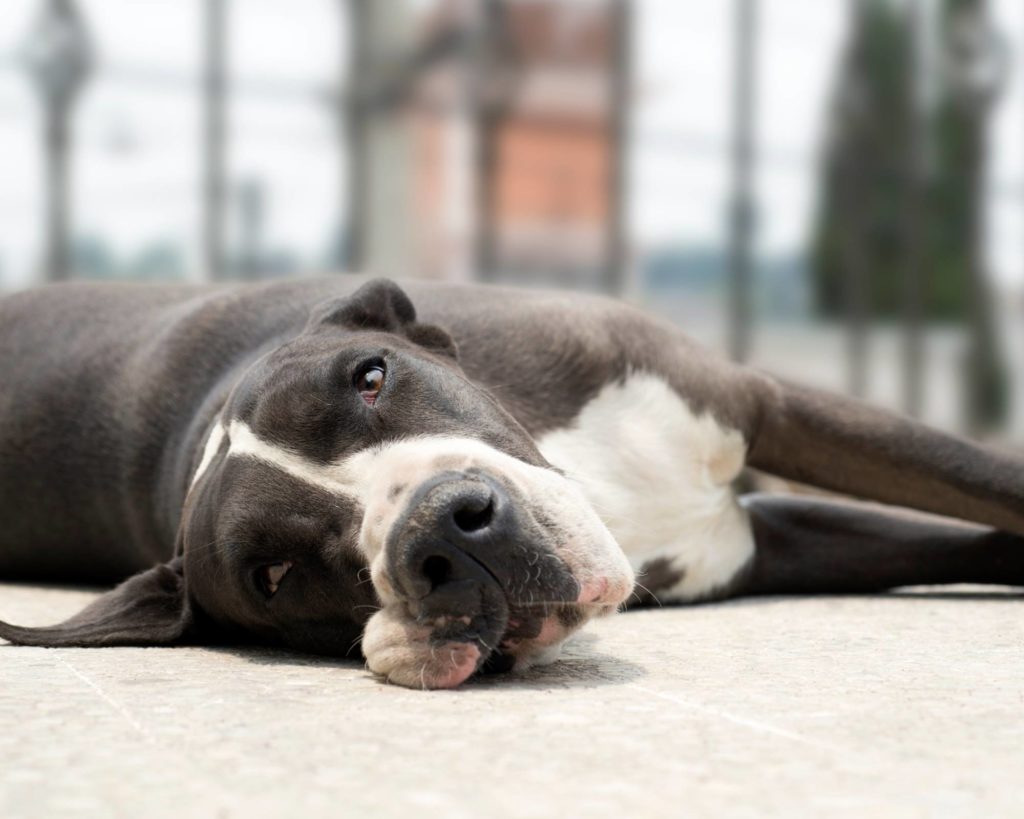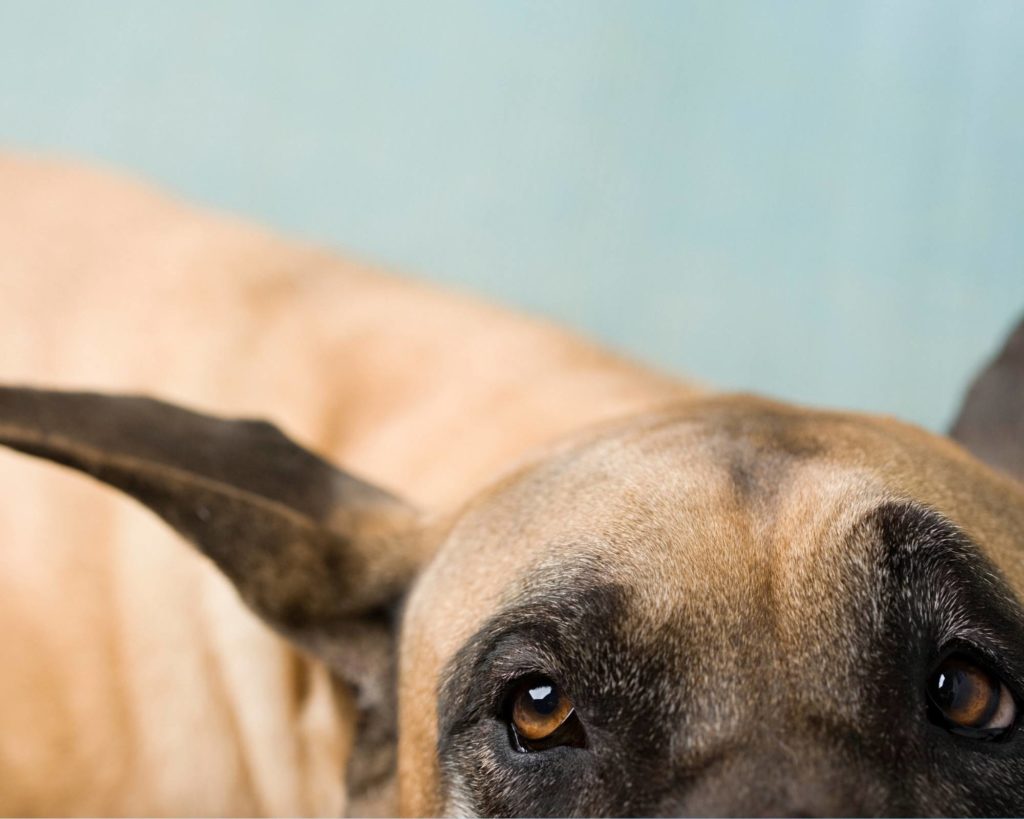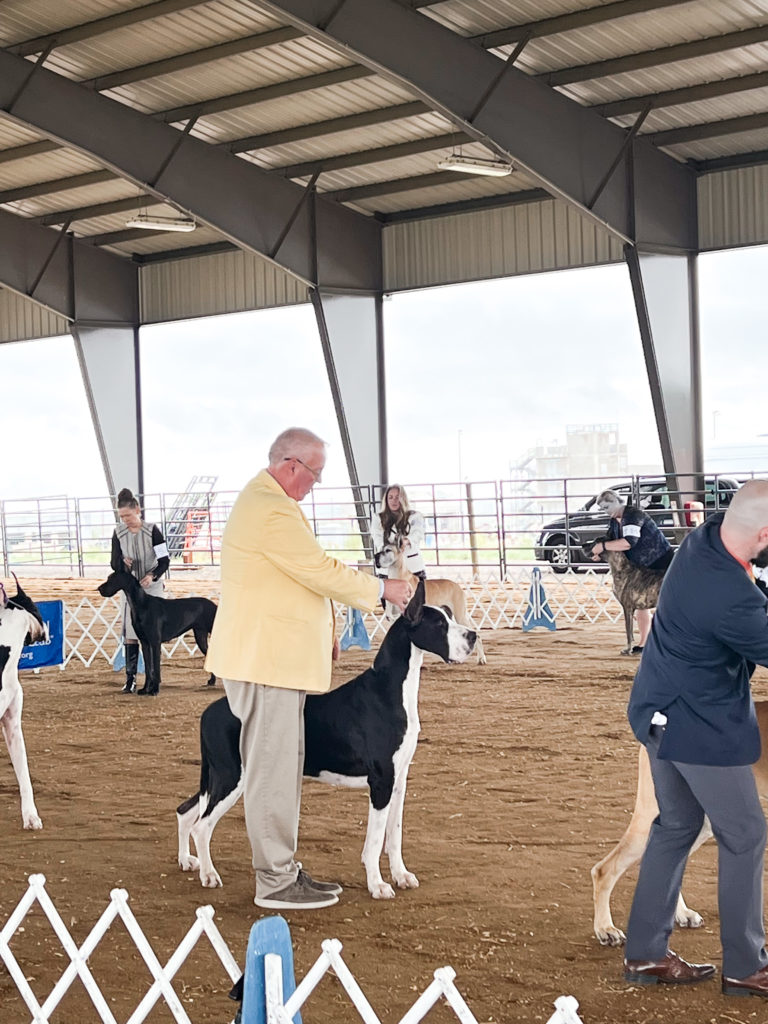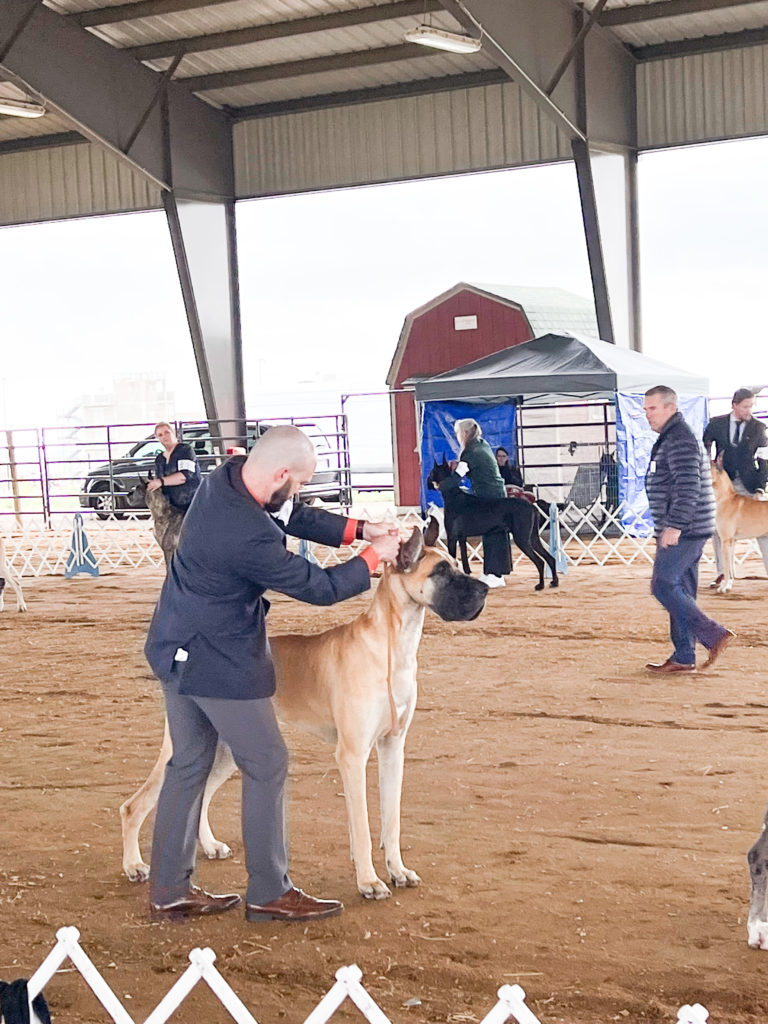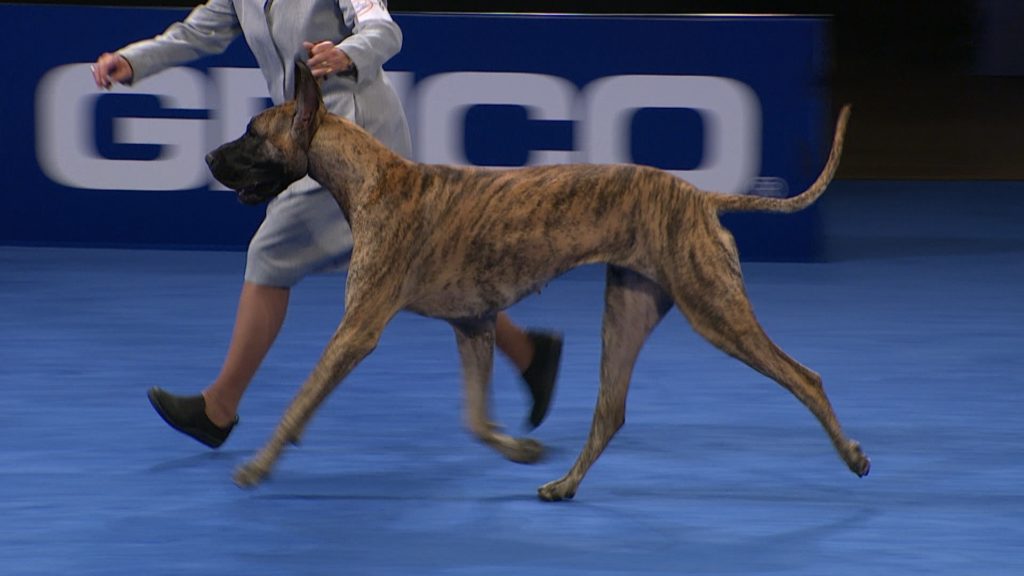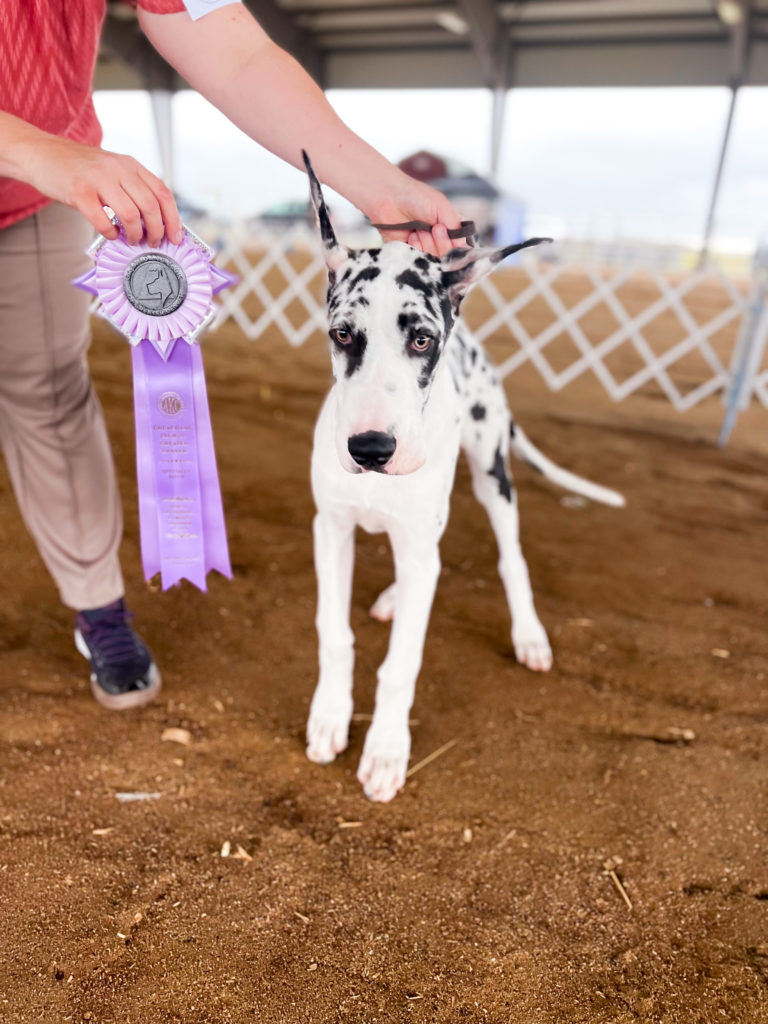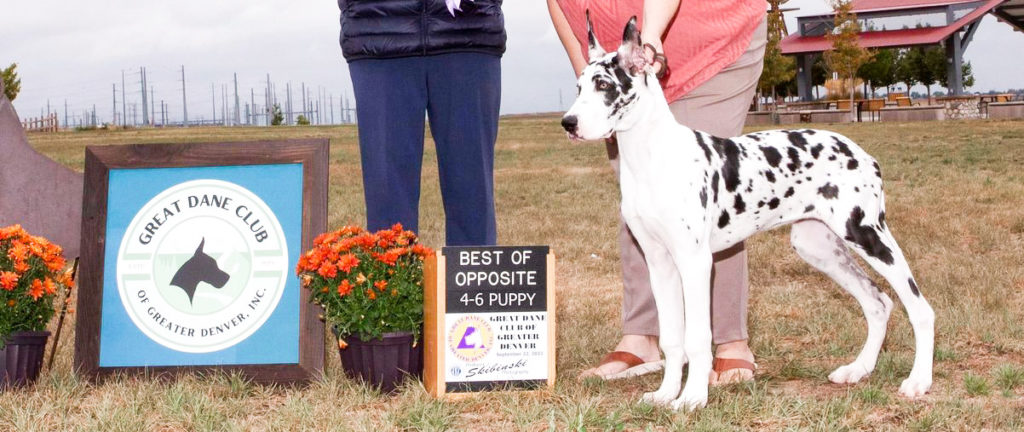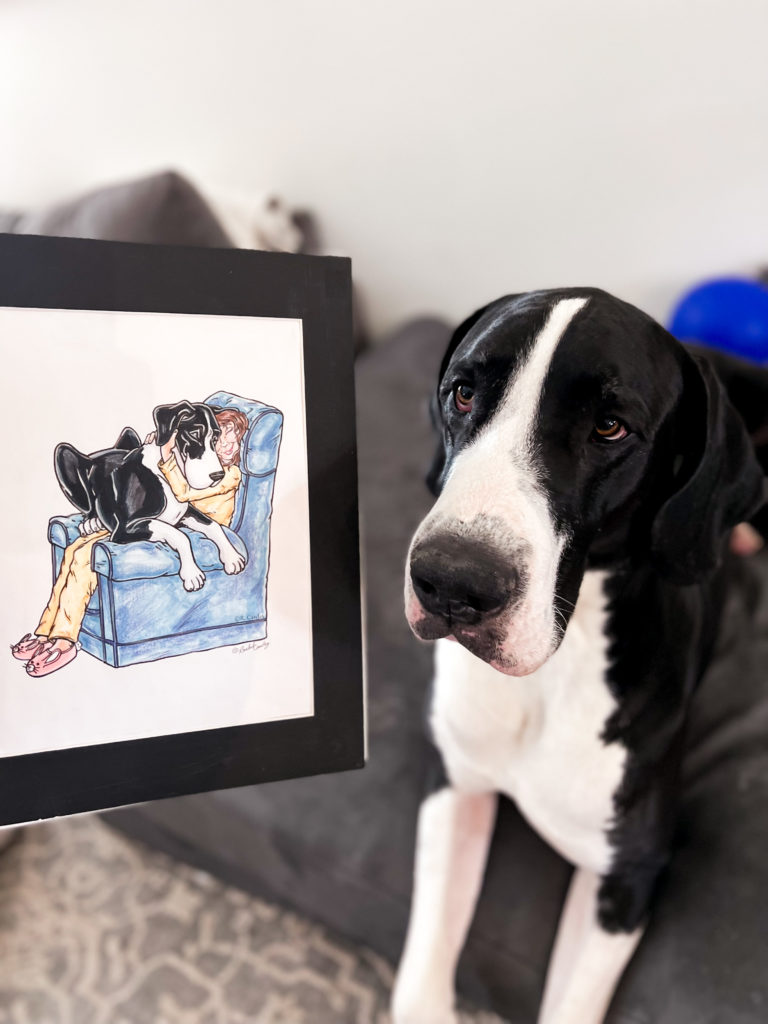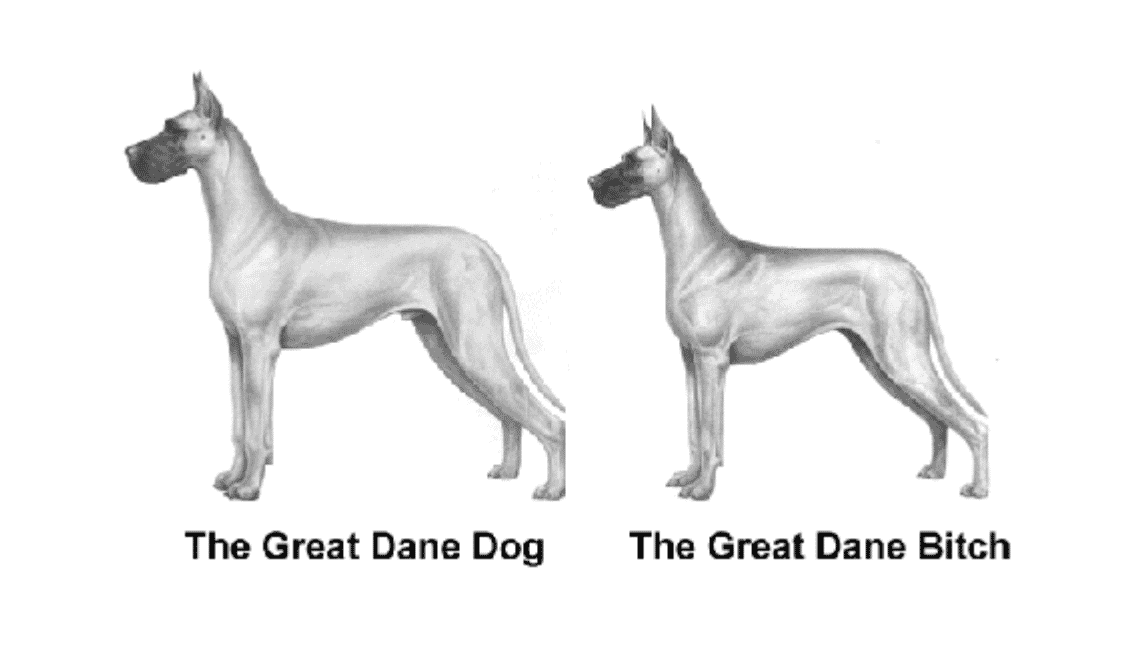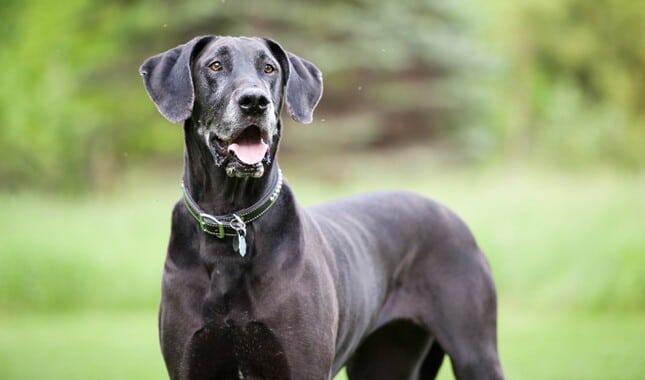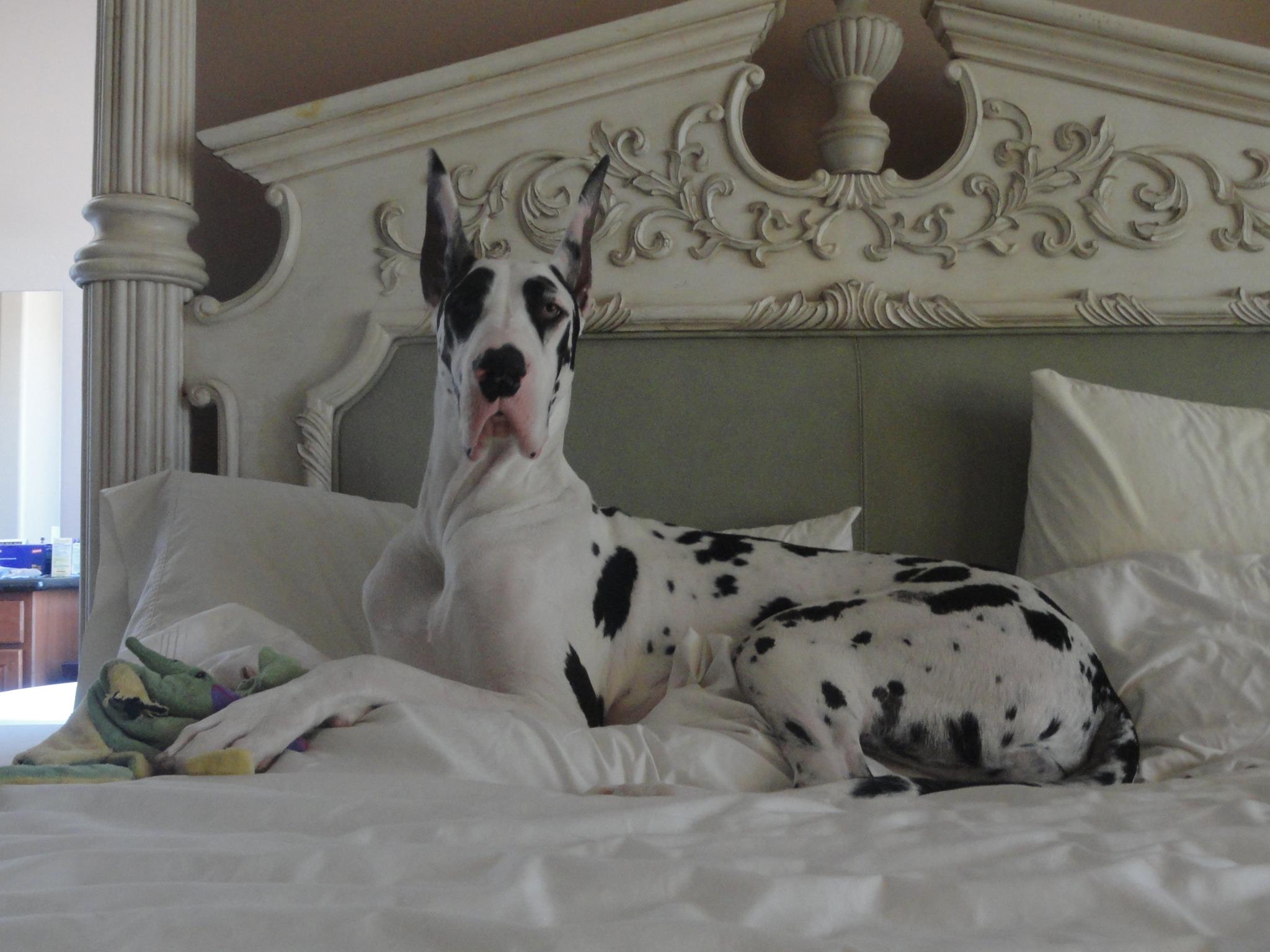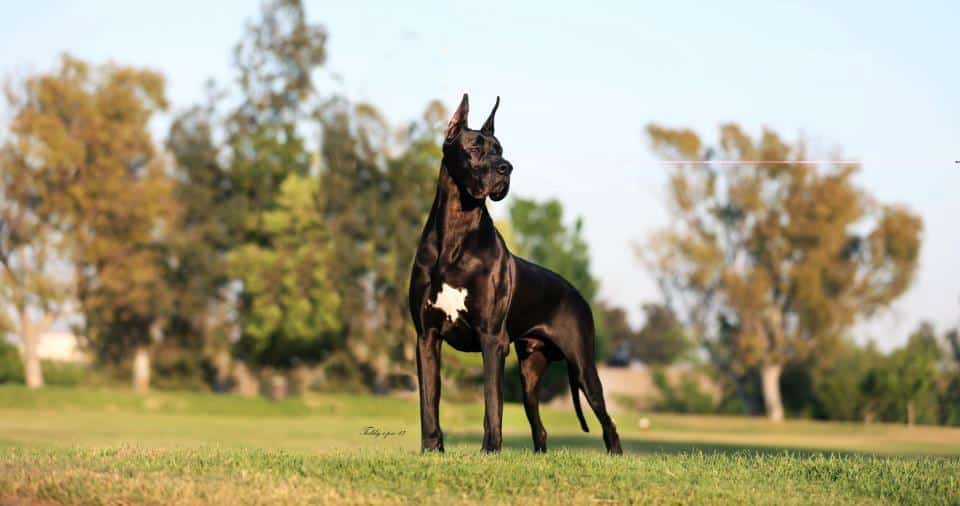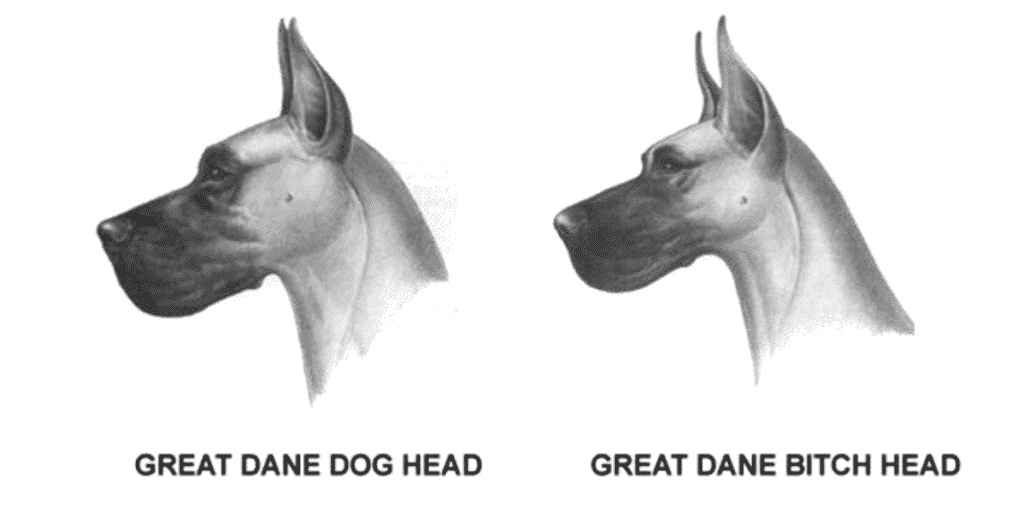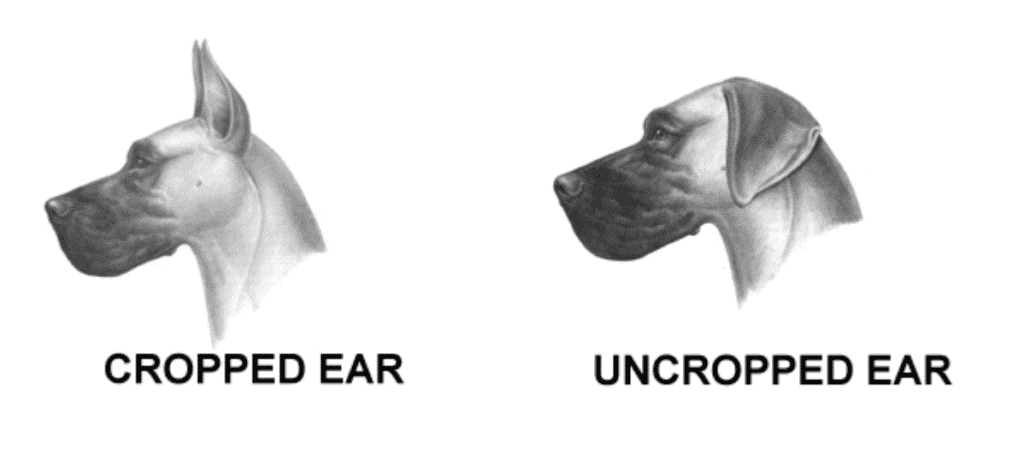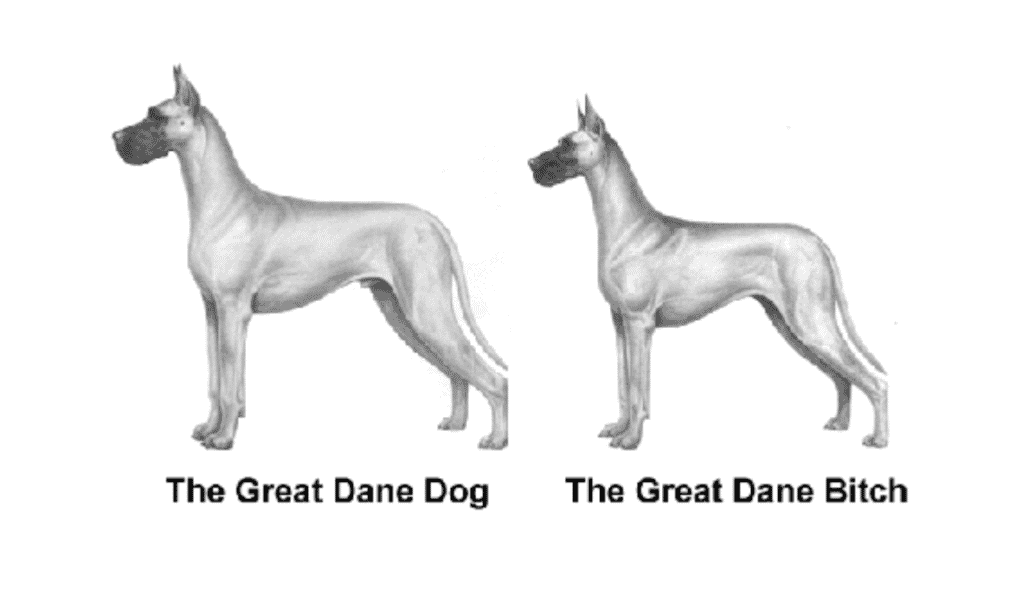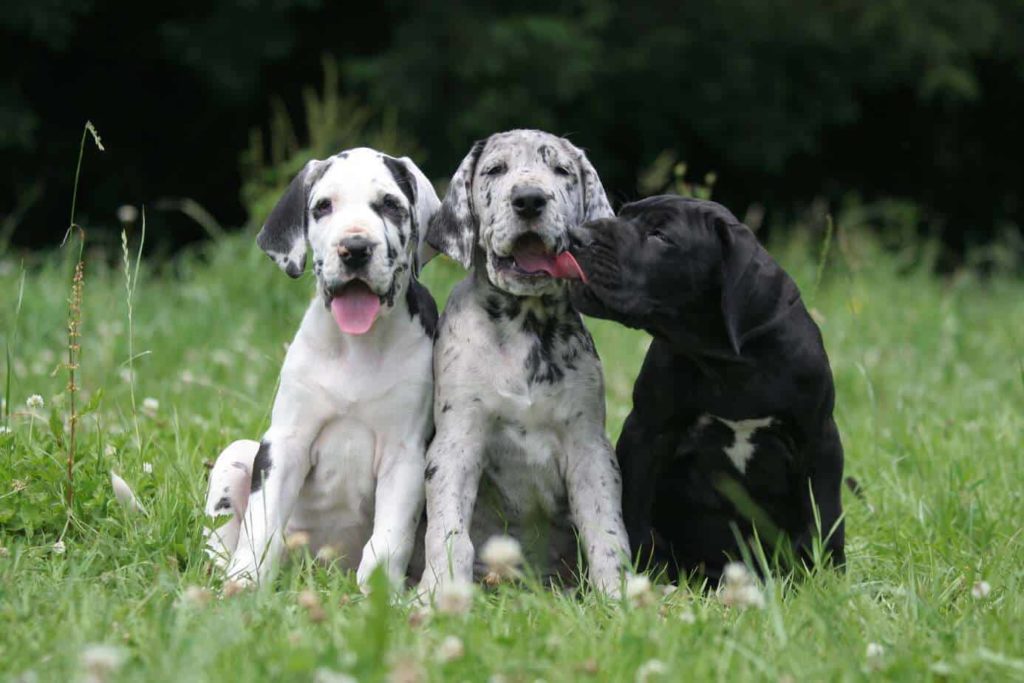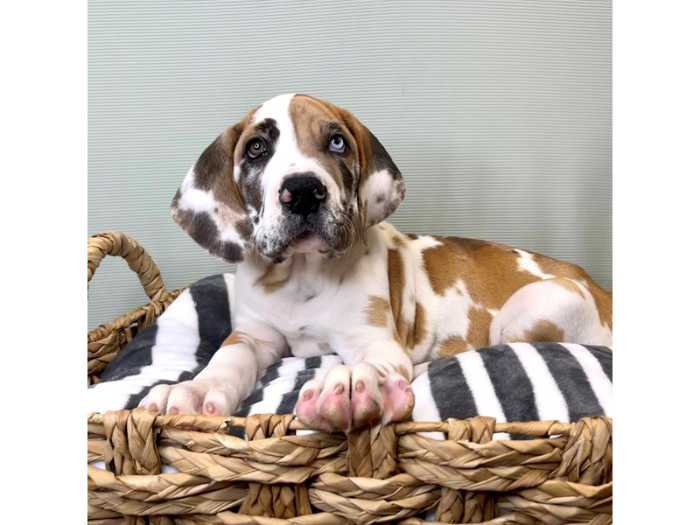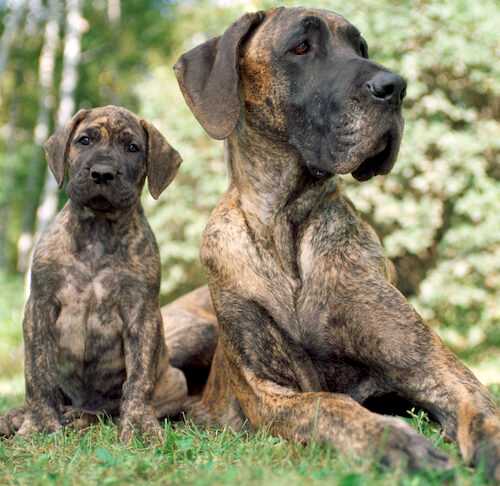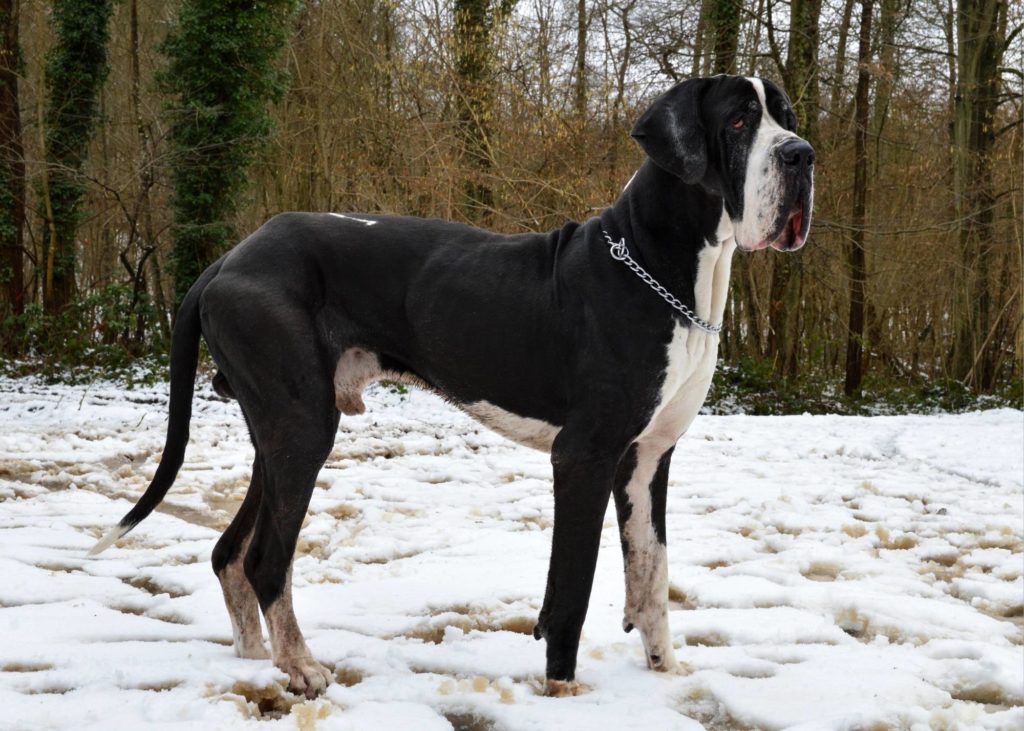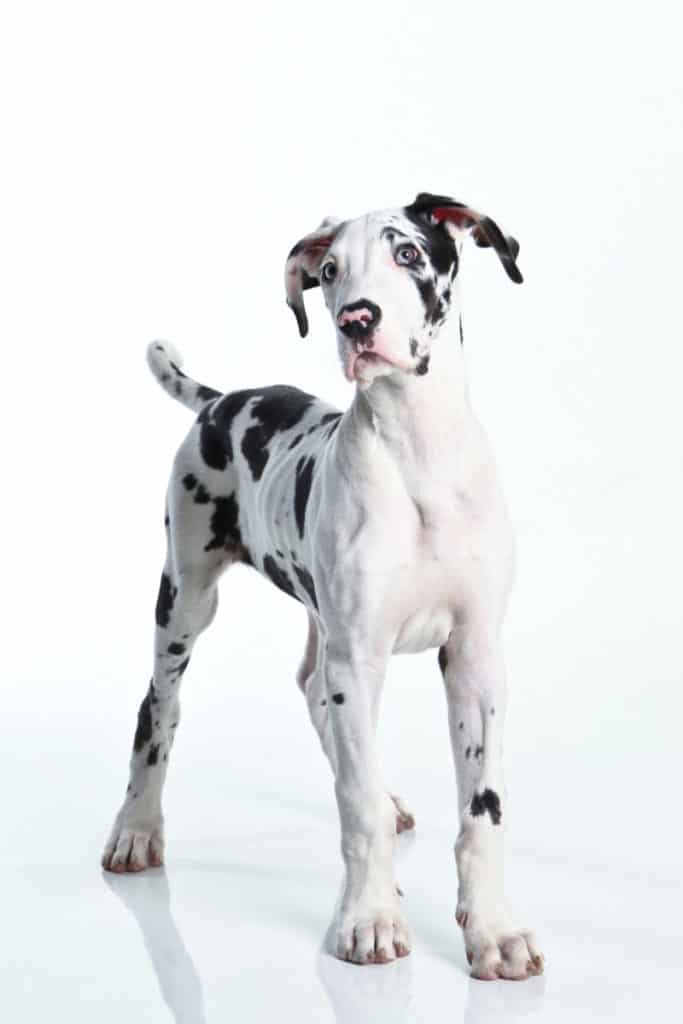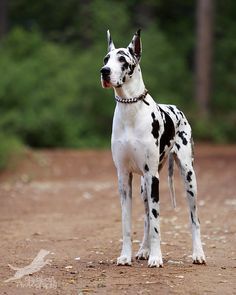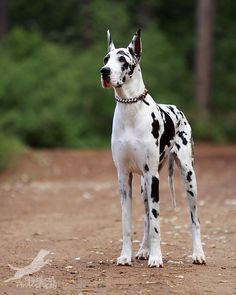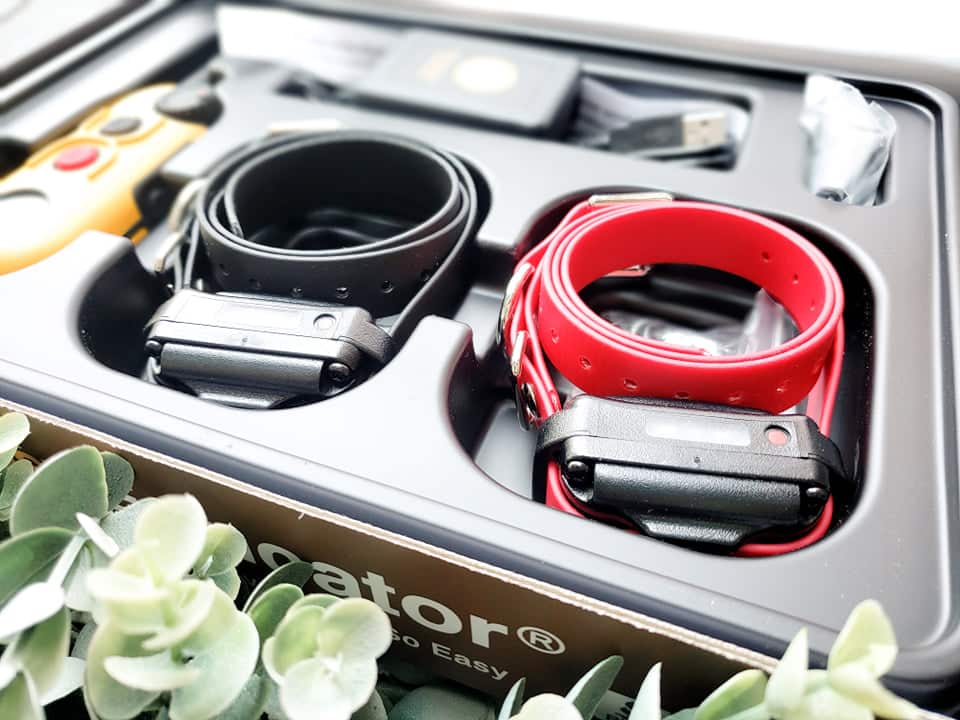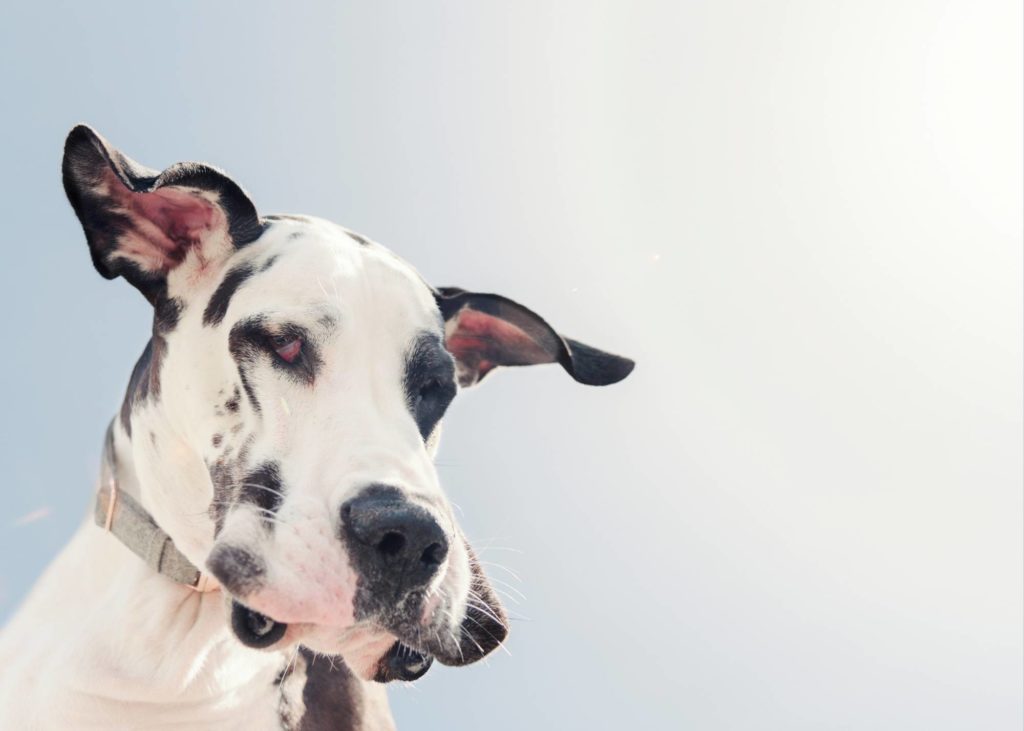Did you know that the Merle Great Dane was not accepted as a standard AKC color until 2019? It’s true! If you ask us, that’s a bit wild considering the fact that the merle coat is a naturally occurring color in Great Danes. Merles occur without mixing color families (more on this later).
Merle Great Danes are very similar to the Harlequin Great Dane, however, instead of having a white base coat, they have a grey one. The merle gene is actually necessary for the Harlequin coat to show up on Great Danes, so this makes a lot of sense.
Merle has become a popular coat pattern in a lot of breeds, however it’s important to note that it only naturally shows up in a few! To put this bluntly, if you have a merle poodle, a merle Frenchie, or a merle chihuahua, your pet has been crossed with something else in a past generation. Danes are special though; merle is a natural coat pattern that goes back to the origins of the pedigree.
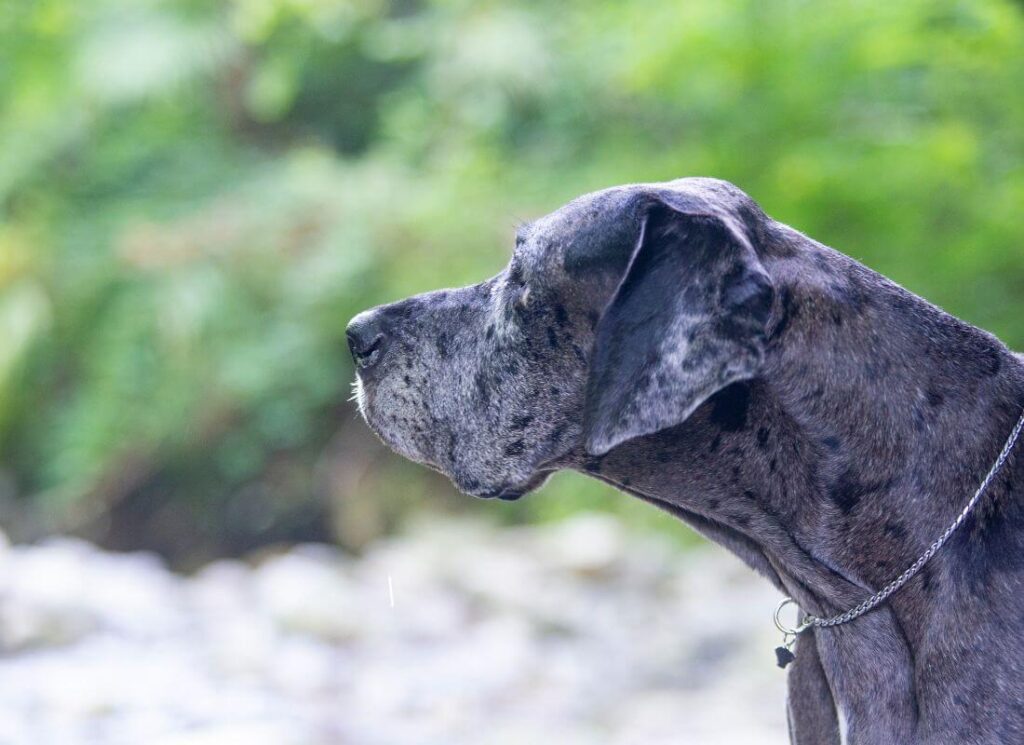
Can Merle Great Danes be Shown?
Yes!
On January 1st, 2019, the Great Dane breed standard was updated to include merle coats and the American Kennel Club began to allow entries. This change came after decades of argument over whether or not Merle should be celebrated and included in the written breed standard for Great Danes.
Of course, to us, the color is beautiful and striking. But before the standard was updated, many breeders and preservationists considered merle to be problematic. There are many genetic implications behind spotted coats like this, and the actual science of it was not well understood.
Merle puppies are a natural effect of breeding for Harlequin puppies and they occur in harlequin color family litters no matter what. As a matter of fact, many breeders get more merles than they do harlequin!
Many of those Merle puppies had gorgeous structure and temperament, but couldn’t be shown. Breeding them was greatly discouraged, no matter how nice they were otherwise. Talk about frustrating. So when the breed standard was updated to include merle, it was a BIG deal.
Read this story about the first breeder to bring a merle Great Dane a Champion title.
It was advancement in genetic technology that allowed researchers to learn about how and why the merle gene affects Great Danes, including its role in the creation of the Harlequin coat pattern.
Read here for information about how the merle coat pattern is judged at dog shows.
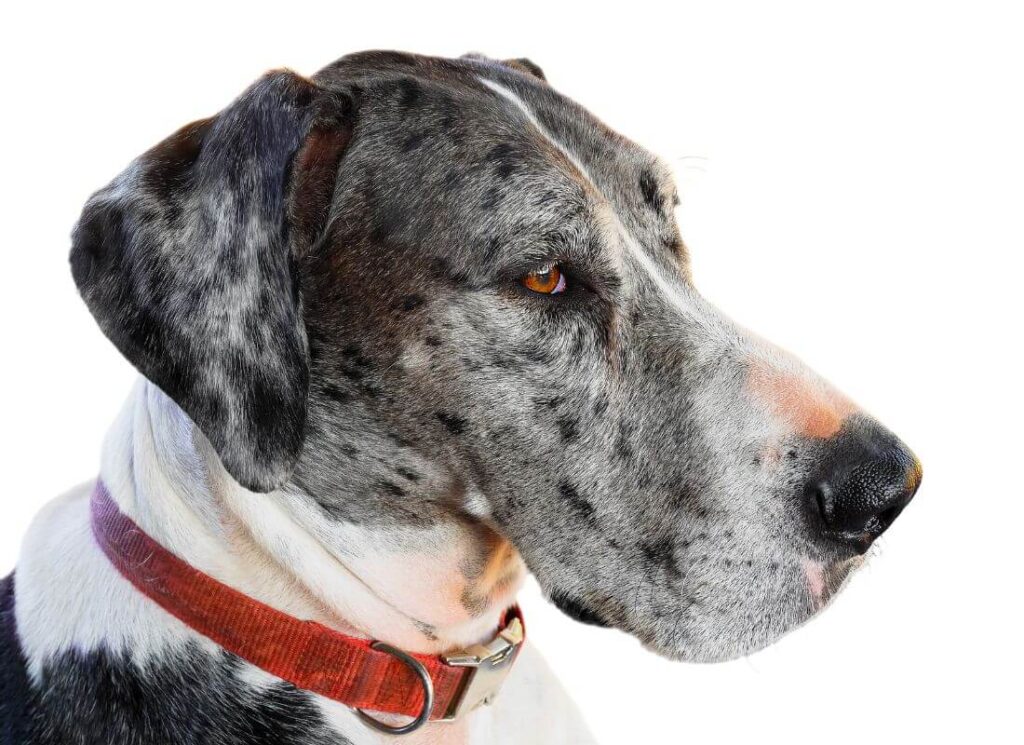
What does a Merle Great Dane Look Like?
Here is a direct quote from the Great Dane Club of America’s written breed standard (which is nearly identical to the written standards in Canada, Europe, and Australia)
The Great Dane Club of America
Color – A pale gray to dark gray merle base color with black torn patches within.
Patterns and Markings – May be a Solid Merle (white on chest and toes permissible) or a Merle with a Mantle Pattern ( solid merle blanket extending over the body; merle skull with a white muzzle; white blaze is optional ; whole or partial white neck; a white chest; white on whole or part of the forelegs and hind legs ; white tipped merle tail. A small break in the blanket is acceptable. Black pigment may be seen on the skin in the white areas
Merle Great Danes are mostly grey with a lot of black patches and dogs, basically. Some of them have merle all over, while others have the mantle coat pattern.
The mantle merle coat pattern means that in addition to the grey with black fur, they have a white collar, white chest, white tip on the tail, white feet, white muzzle, and a white blaze on the head. This comes from mixing merle or harlequin and mantle coat patterns, and is considered an ideal marking.
Here is an image that illustrates the different merle coats seen naturally in Great Danes. Notice how similar some of them are to the black and white mantle Great Danes! Also, notice how they might look like a harlequin Great Dane if their base coat was white instead of grey.
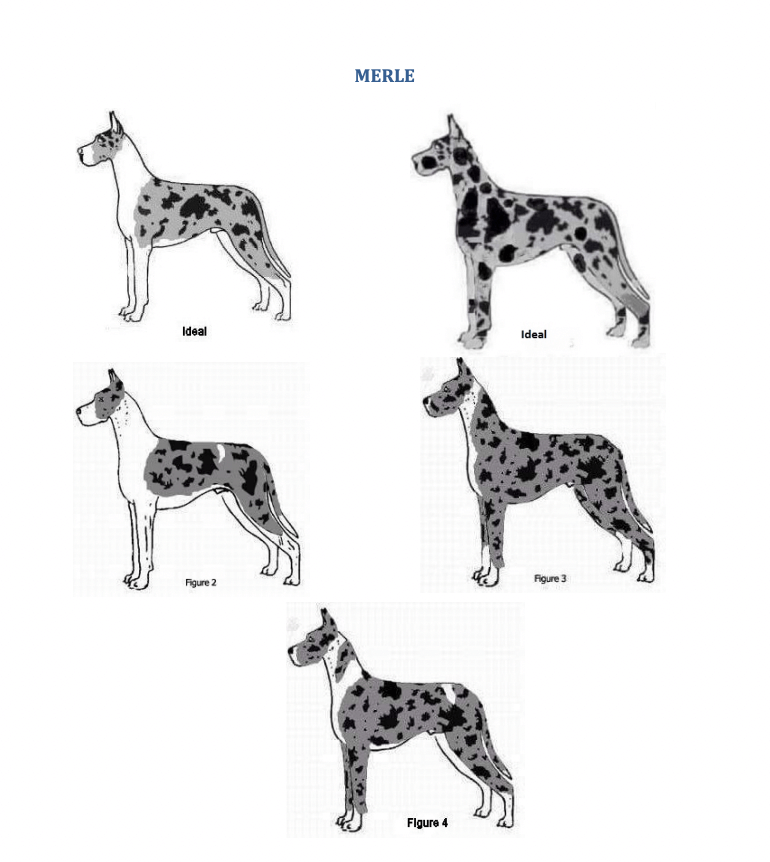
Do Merle Great Danes have Health Problems?
Merle Great Danes, like any other dog breed, may be prone to certain health issues, although coat color itself is not inherently linked to health problems.
The merle gene, which contributes to the distinctive coat pattern, is associated with a higher risk of deafness and vision impairments in some dogs, particularly those with a double merle genotype (when both parents carry the merle gene). This can happen when uneducated or unethical breeders intentionally pair two dogs together that truthfully, shouldn’t be.
Responsible breeding practices, including health screenings and avoiding certain genetic combinations, can help mitigate or even eliminate these risks. It’s crucial for potential Merle Great Dane owners to choose reputable breeders who prioritize the health and well-being of their dogs, conduct genetic coat color and OFA health testing, and adhere to ethical breeding standards.
Regular veterinary check-ups and a healthy lifestyle are essential for all Great Danes, regardless of their coat color, to ensure a long and happy life. We recommend feeding a diet that meets WSAVA recommendations and keeping Great Danes lean.
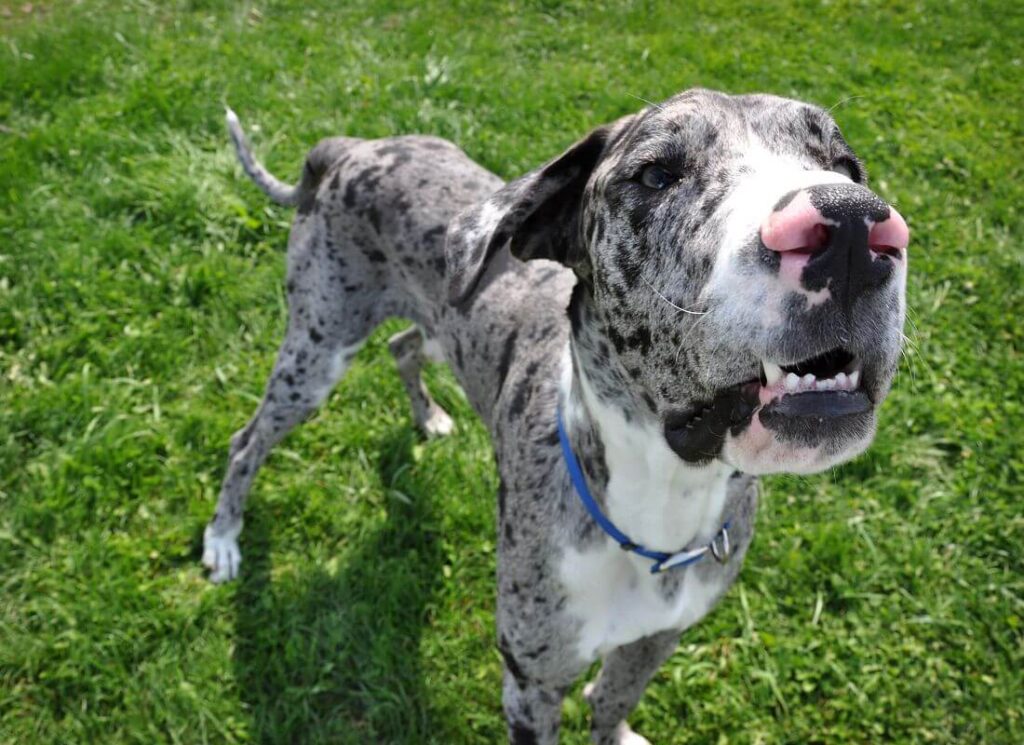
What is a Double Merle Great Dane?
A Double Merle Great Dane is the result of breeding two dogs that both carry the merle gene.
The merle gene, responsible for the striking merle and harlequin coat pattern in Great Danes, can have detrimental effects when inherited from both parents.
In a Double Merle, the gene is expressed twice, leading to a higher likelihood of serious health issues such as deafness, vision impairments, and other congenital defects. These health concerns stem from the disruption of pigmentation patterns during embryonic development.
Responsible breeders actively work to avoid producing Double Merle puppies, as the associated health risks can significantly impact the well-being of the dogs.
What is a Merlequin Great Dane?
While the genetic basis of the ‘merlequin’ Great Dane is often contentious, this mish-mashed word is used to describe Great Danes that look like Harlequins but instead of having torn black patches, ALL of their patches are merle. A true merlequin puppy will have NO solid black patches (only merle), and a pure white coat covering most of their body.
This image below from Show Sight Magazine is the best example of a “merlequin” I’ve ever seen. Unlike many double-merle Great Danes, thankfully this one appears to have good structure (and hopefully health, too!).
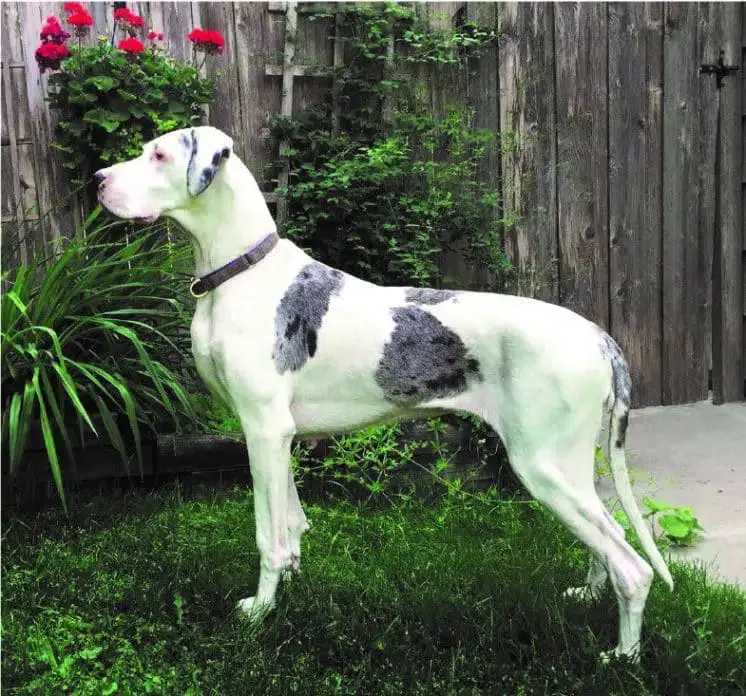
How to Find Merle Great Dane Puppies for Sale
Finding Merle Great Dane puppies for sale requires careful research and consideration to ensure a responsible and reputable source.
Do not ever purchase a Great Dane from random websites (these are always a scam), on social media (a hotbed of scams and unethical breeding), or in pet stores.
Start by seeking breeders who specialize in Great Danes and have a positive reputation within the canine community. The best place to start is by connecting with breeders who are members of the breed club. You can use their Great Dane breeder search tool HERE.
While many of the breed club members may not have litters or puppies available, they may be able to refer you to other breeders who do. Their referral will be of a much higher caliber than anything you can find on social media or through an internet search. This is a little known secret and one we recommend utilizing if you want a merle Great Dane with exceptional health and a wonderful temperament.
Always verify that the Great Dane breeder you’ve found has complete the following tests on BOTH parents:
- OFA Hips
- OFA Heart
- OFA Thyroid
- OFA Eyes
- BONUS: PennHip, IMGD, and Coat Color Testing
You must visit www.ofa.org and search for the breeder and the parents to see these health testing results. If they aren’t published or don’t exist for the parents of the puppy you are interested in, your breeder is unethical and is cutting corners on health. Do not let them buy you with misinformation about how they feel those tests are “unnecessary”.
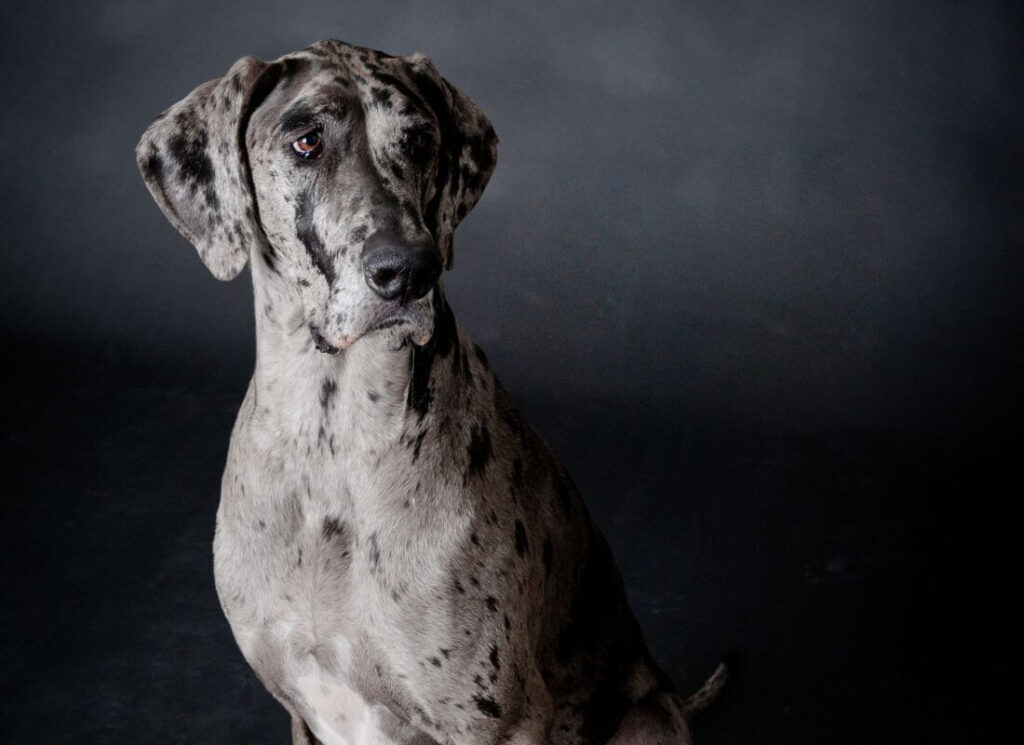
What is a Blue Merle Great Dane?
Some people reference the “blue” merle Great Dane, and this is where coat patterns start to go off the rails a little bit.
Blue is a recognized coat color for Great Danes. However, for genetic and health reasons, the most ethical practice is currently to stay within color families. This means that technically speaking, blue Great Danes should only be bred with other blue Great Danes.
However, many breeders love to mix up blue dogs into their pedigree because it results in striking lighter coat patterns.
If you have a Blue Merle Great Dane puppy, it is no doubt a beautiful dog with a lighter coat than a traditional AKC merle that meets the breed standard. Blue Merle occurs when a breeder mixes the blue Great Dane color family with the merle + harlequin genetics. This is a debatable practice that has some valid arguments.
Here are the accepted Great Dane color families. In general, breeders should stay within these families when making breeding decisions. There are times, however, when brindle or fawn shows up in a Harlequin + Black litter! This can happen if the black parent dog had come from brindle + fawn genetics instead of harlequin genetics.
- Harlequin, Black, Mantle, Merle
- Brindle, Fawn, Black
- Black
- Blue
There are times when mixing color families is necessary for the health and structure of a pedigree. However, entirely too many breeders do this solely in pursuit of unique, designer colors and will completely disregard major considerations concerning health and temperament to do it. That practice is unethical for a number of reasons; so we do not recommend seeking out Great Dane puppies in off-standard colors.
If the day ever comes that we find a breeder who focuses on “designer” colors and has well-built healthy dogs, but is ALSO receiving 3rd party feedback and completing all OFA health tests, this recommendation may change. Until then? Steer clear.
Are Merle Great Danes Rare?
Merle Great Danes are NOT rare.
No breeder should charge extra for you to purchase a Great Dane in a merle coat pattern of any type.
Leave a comment below, we’d love to hear from you! Do you have a merle Great Dane?

